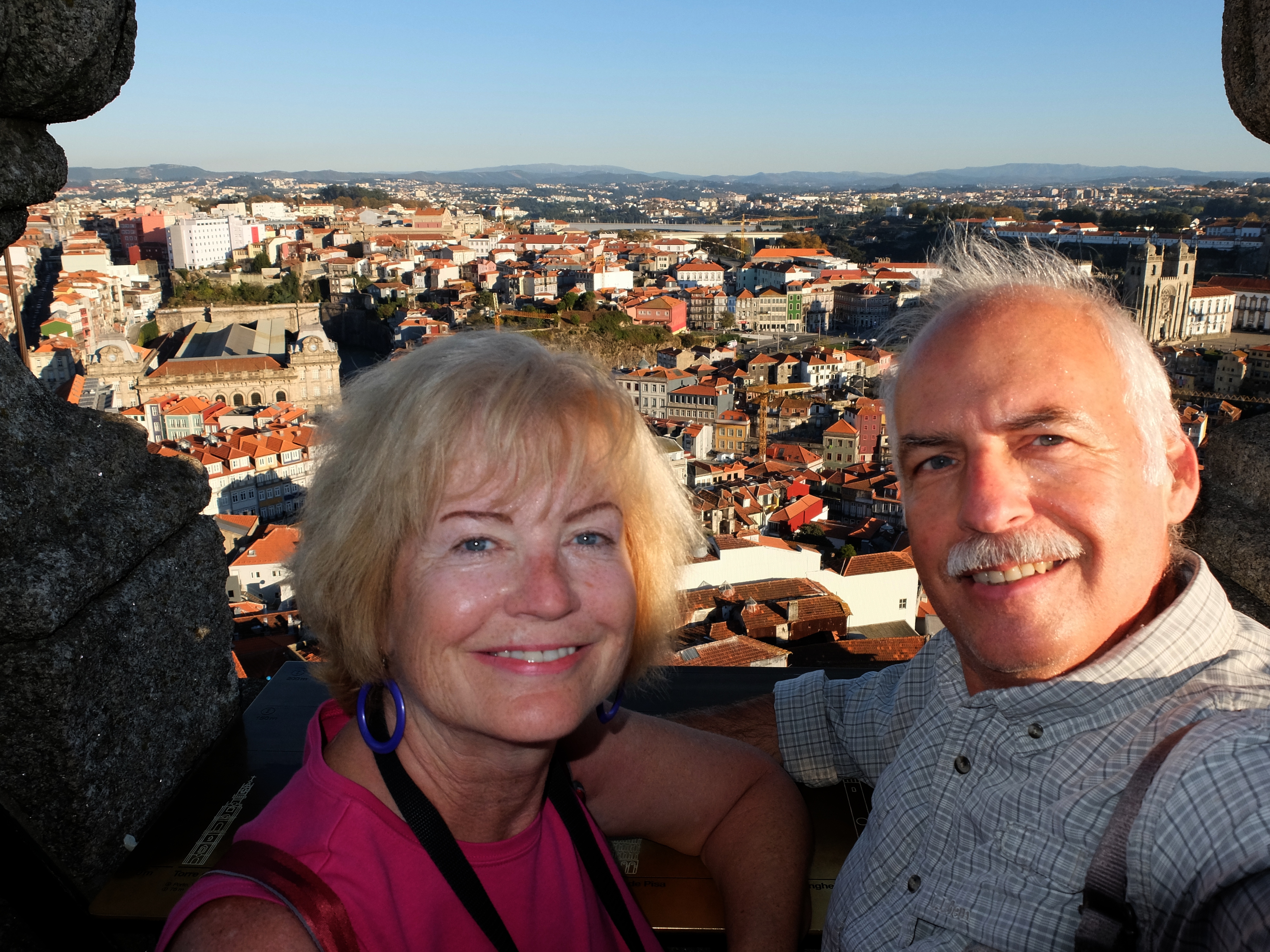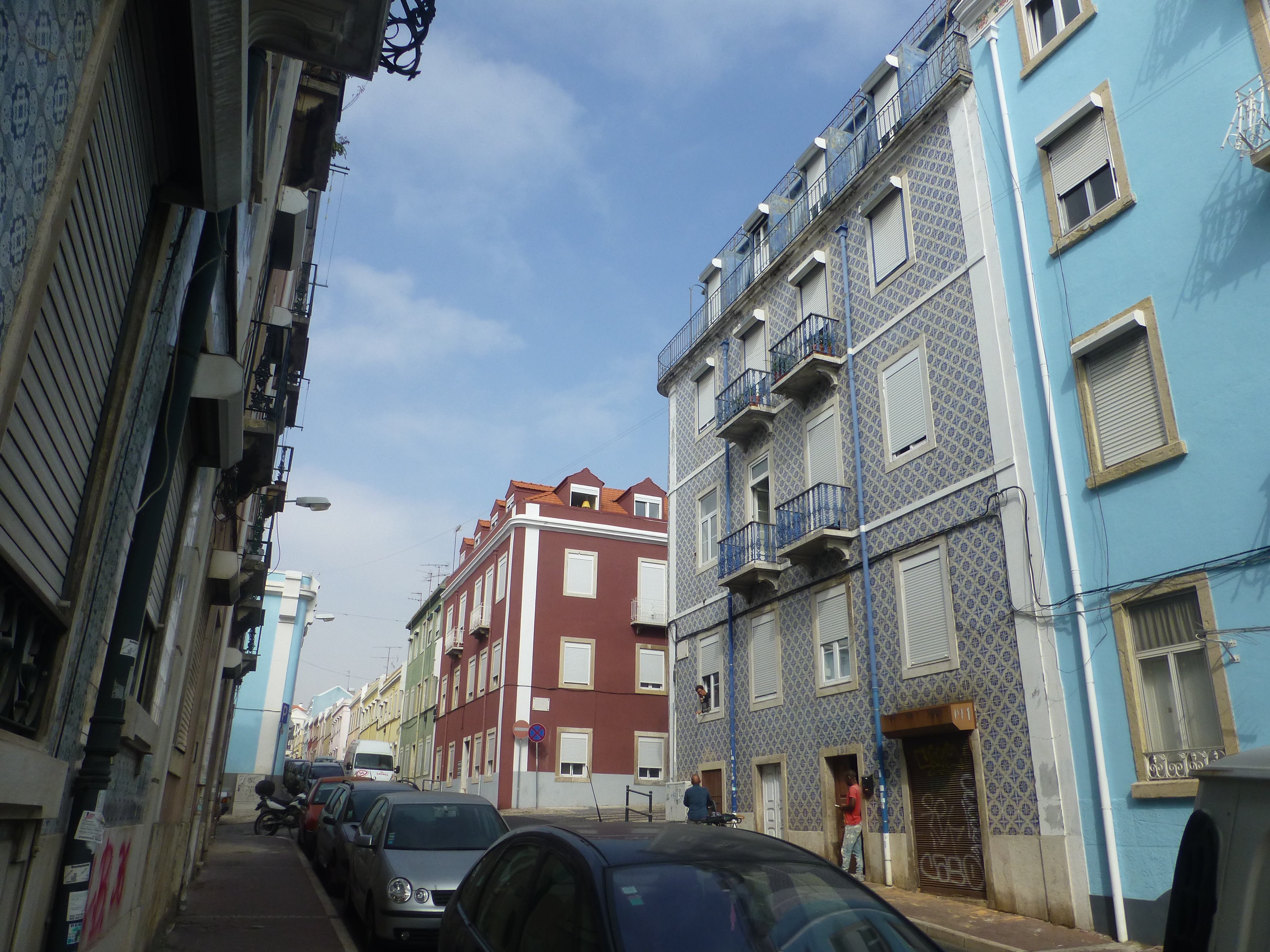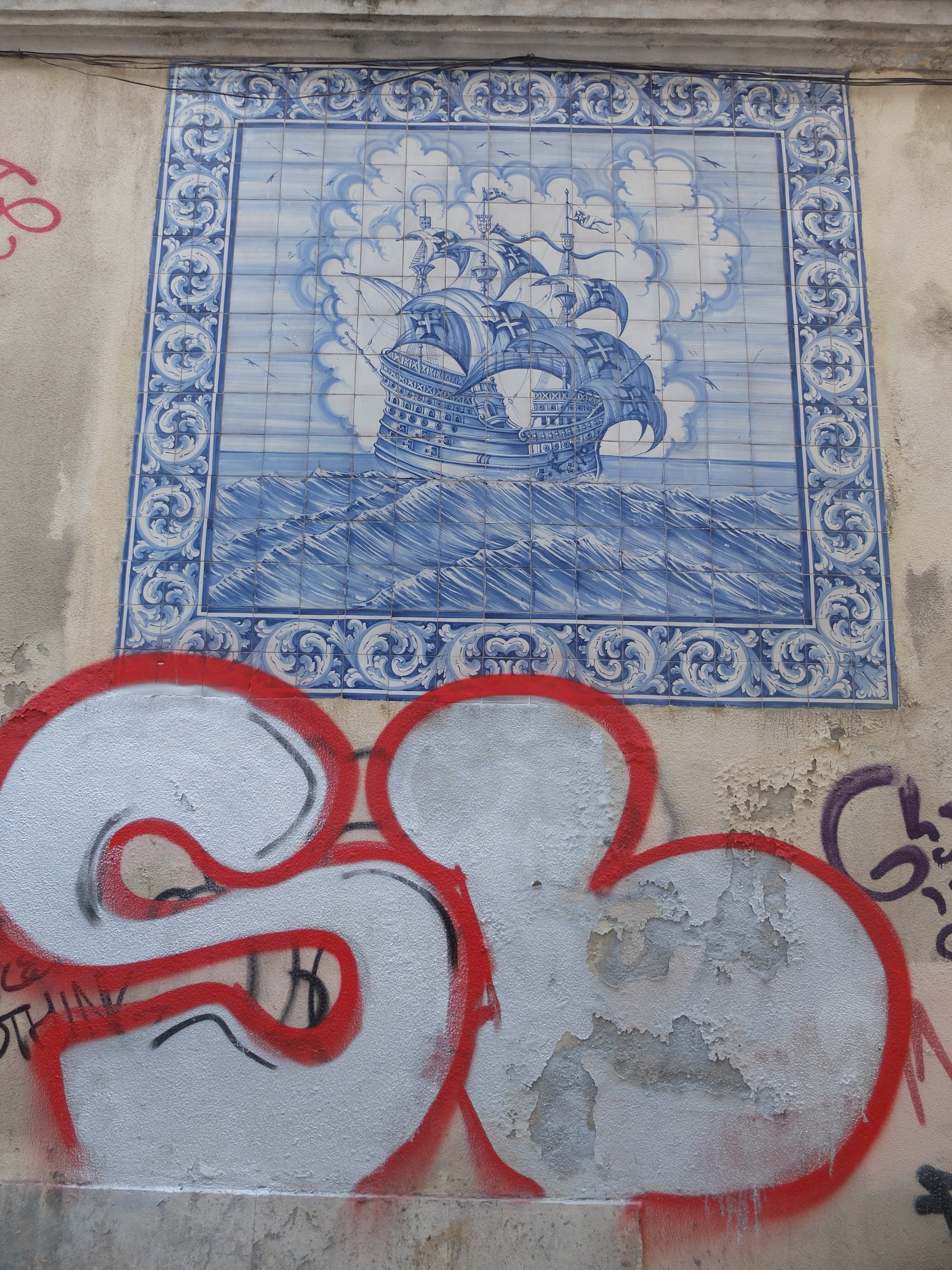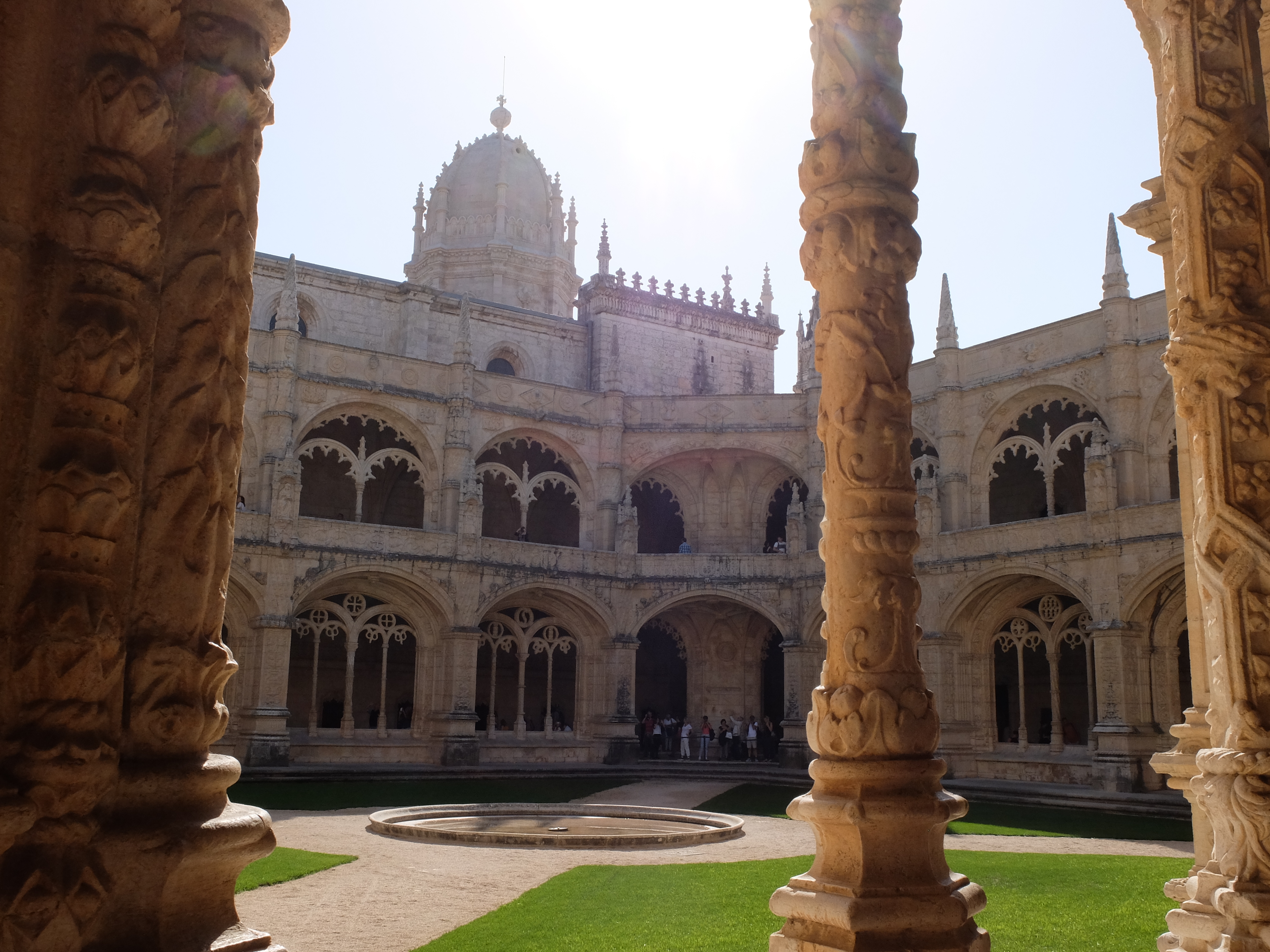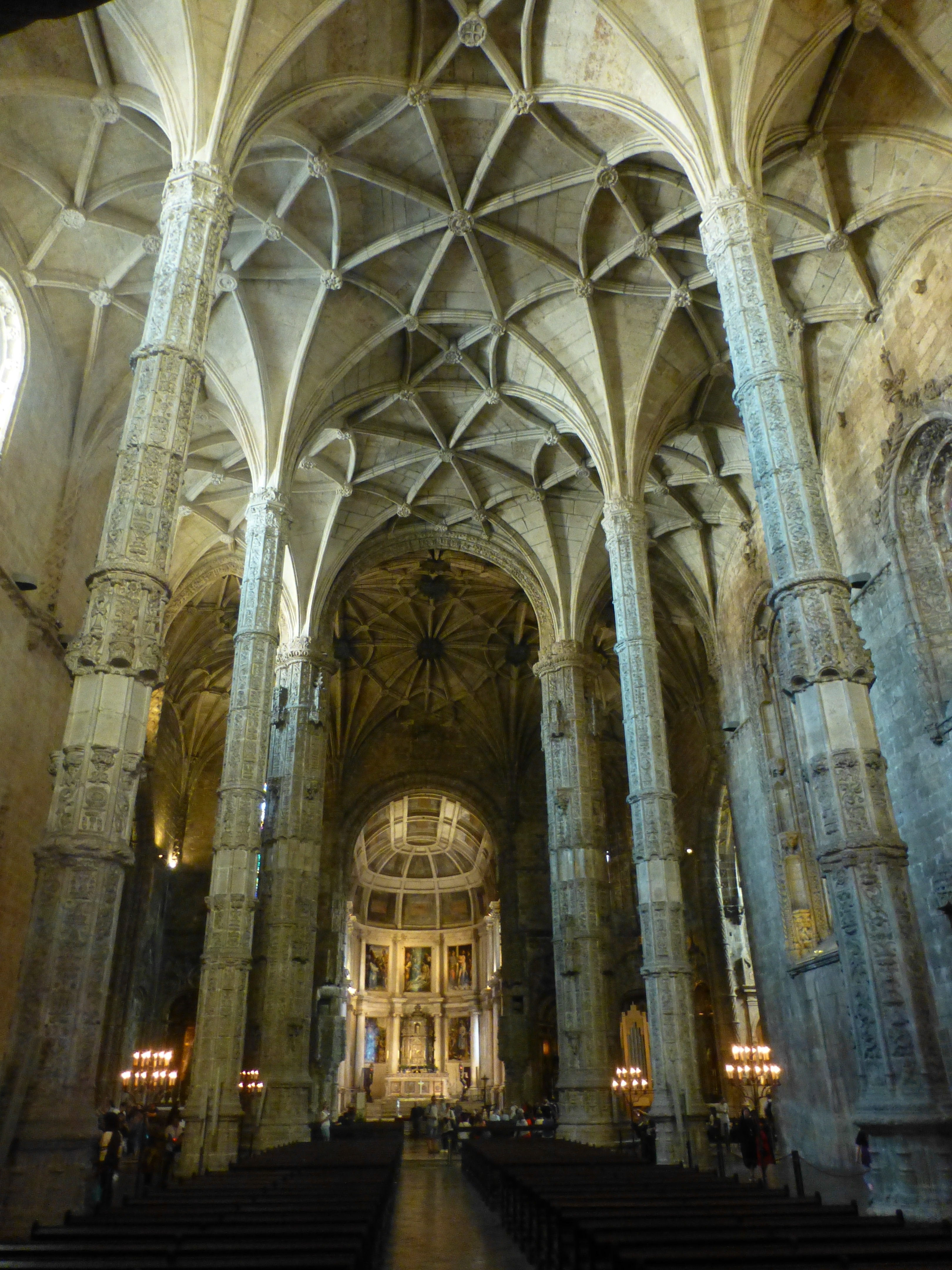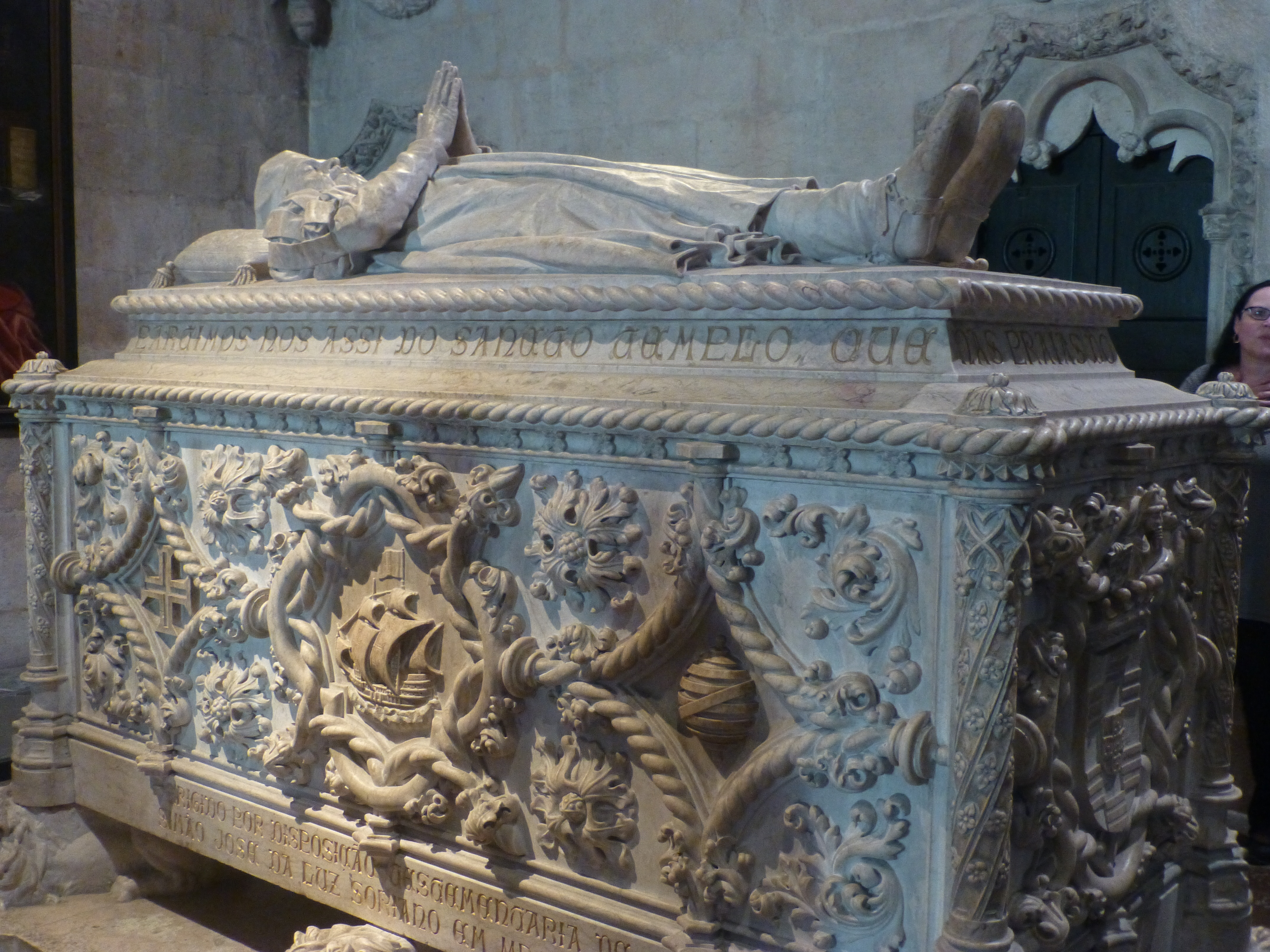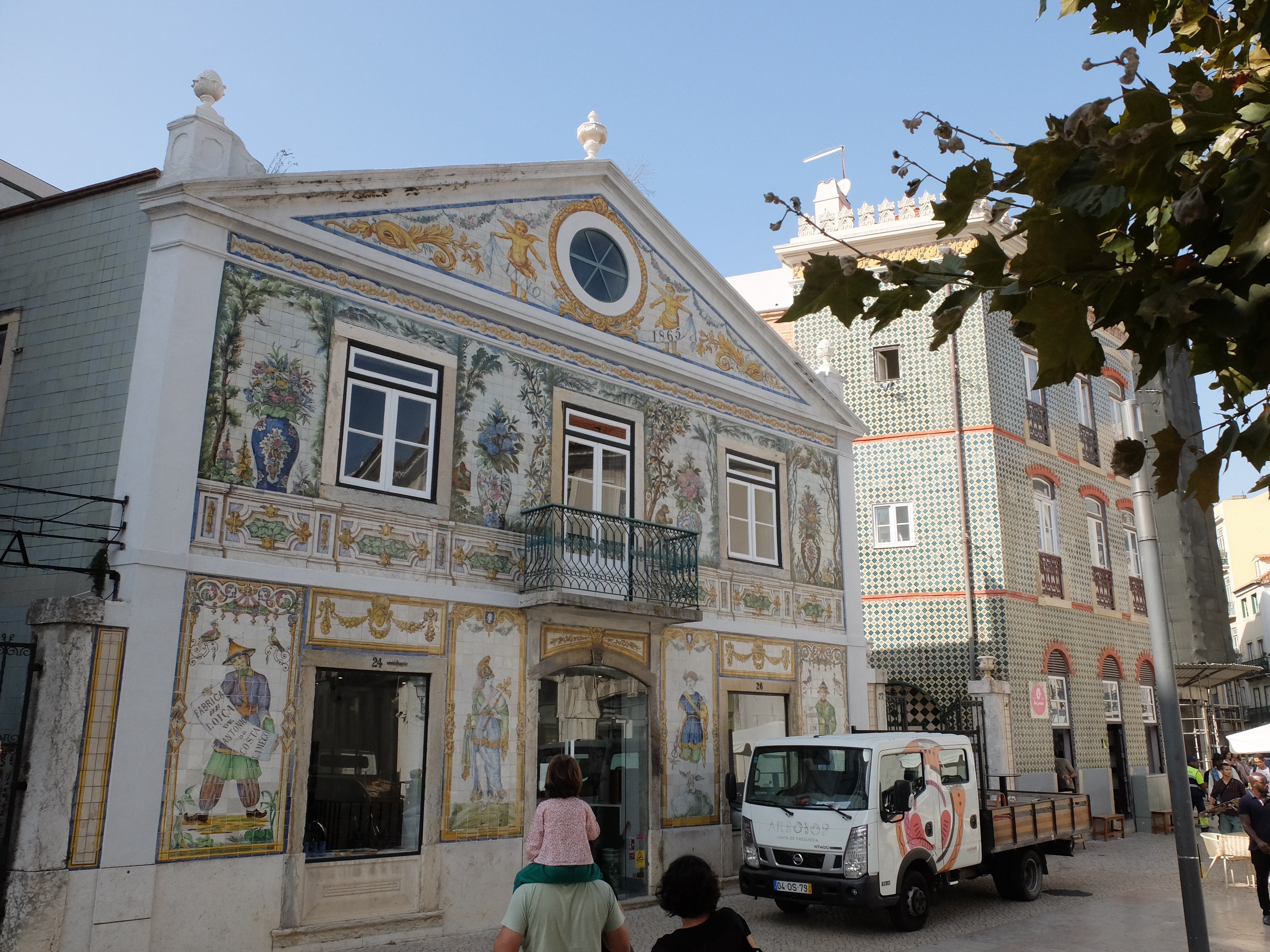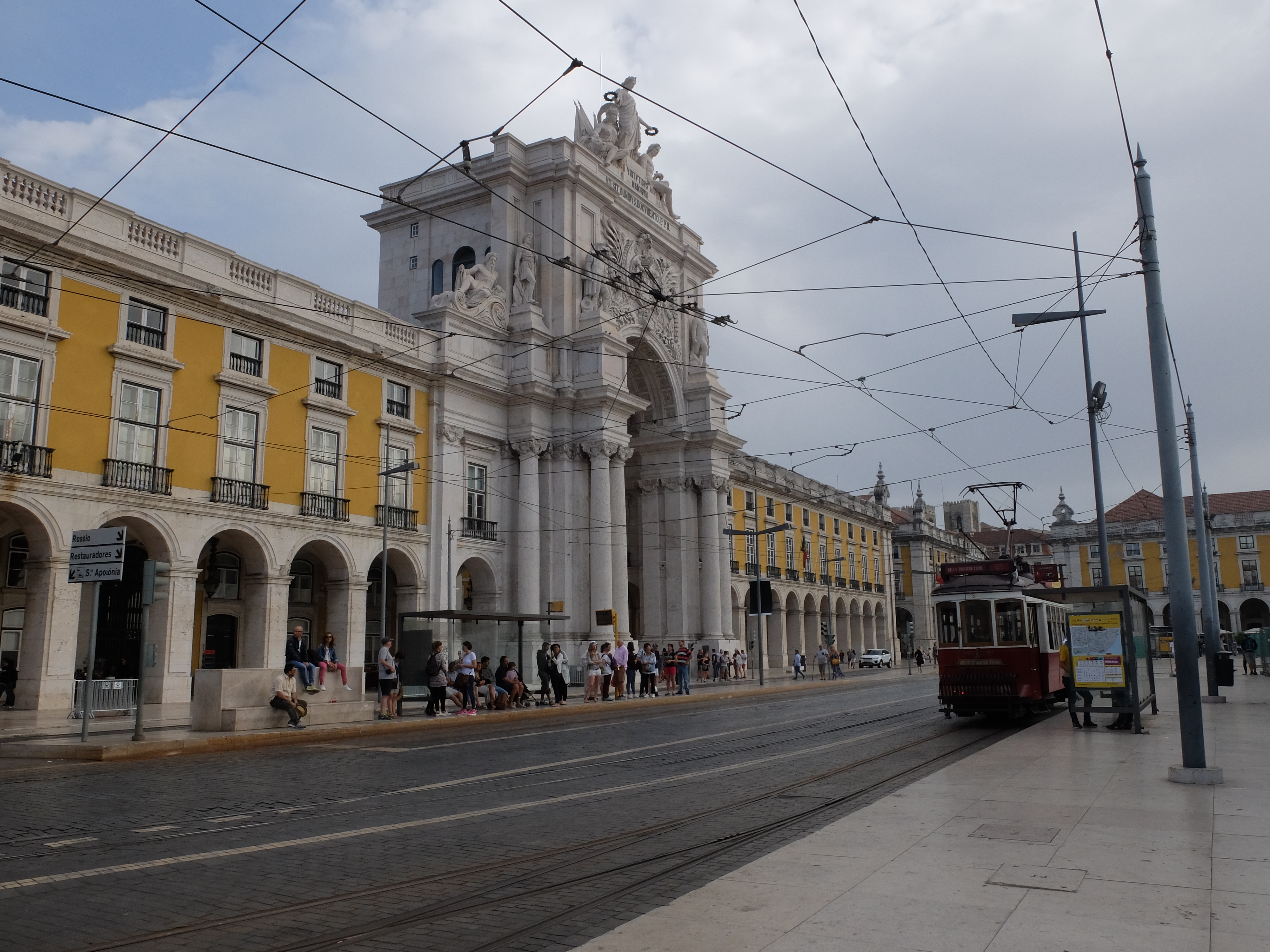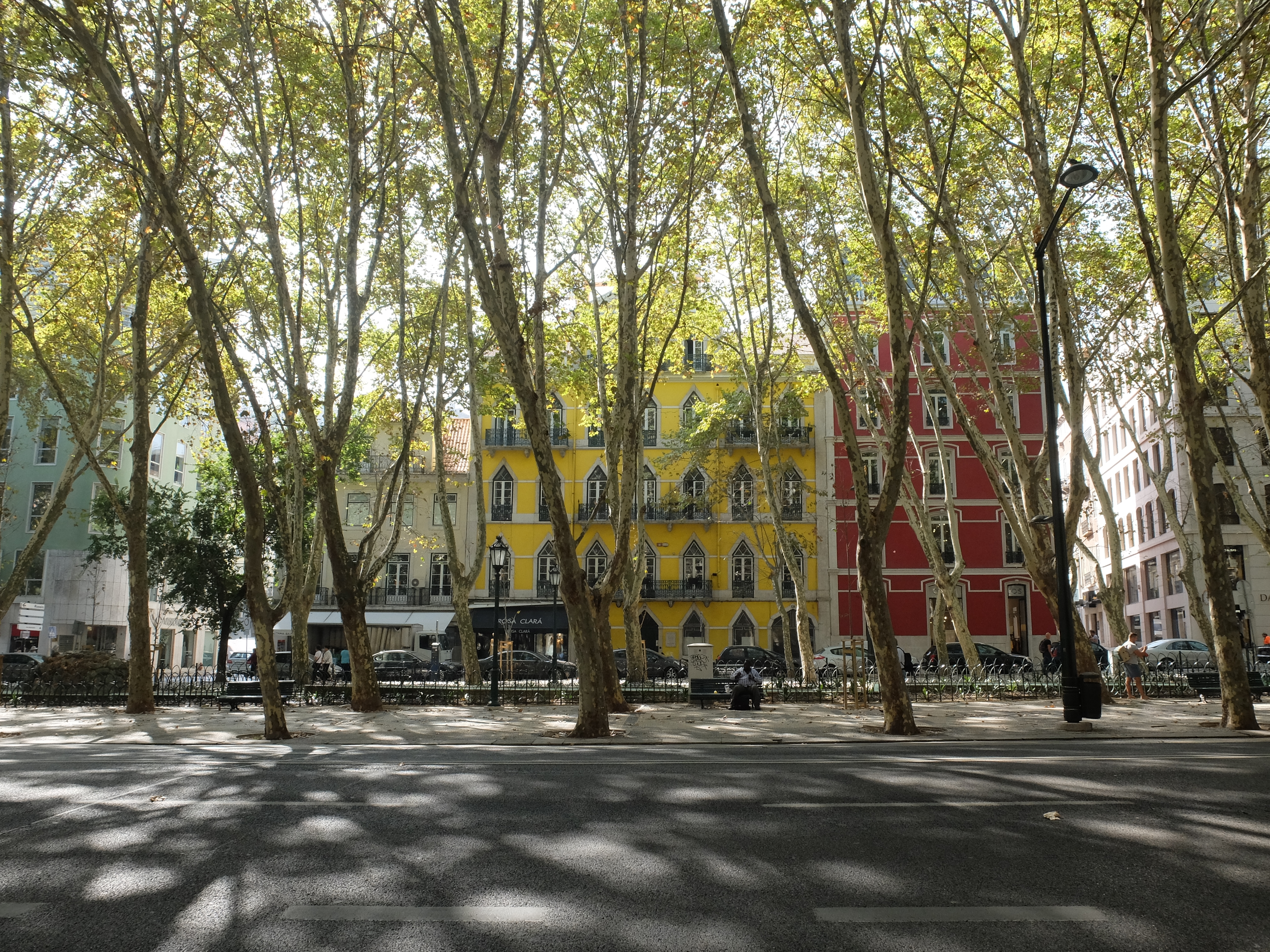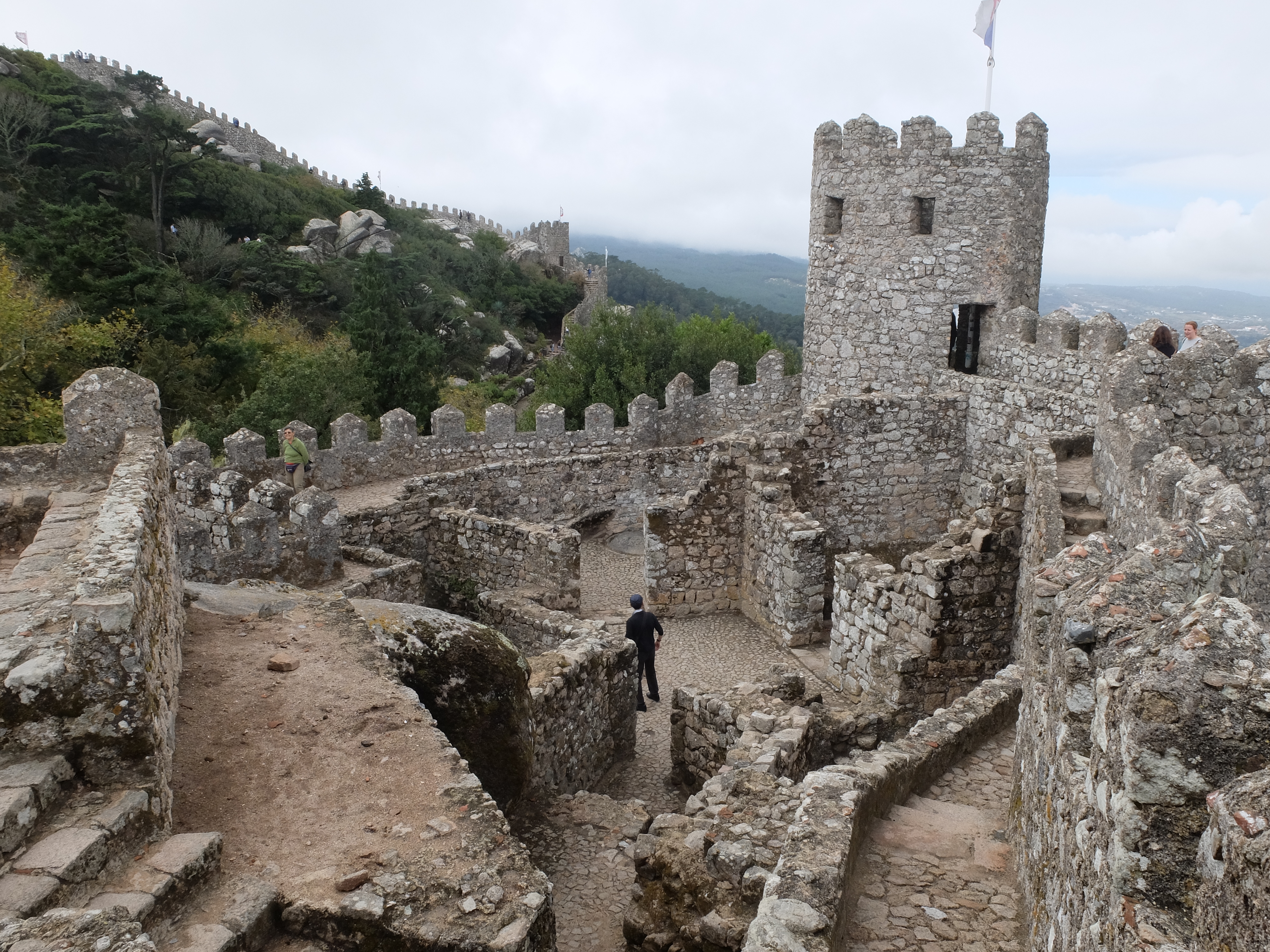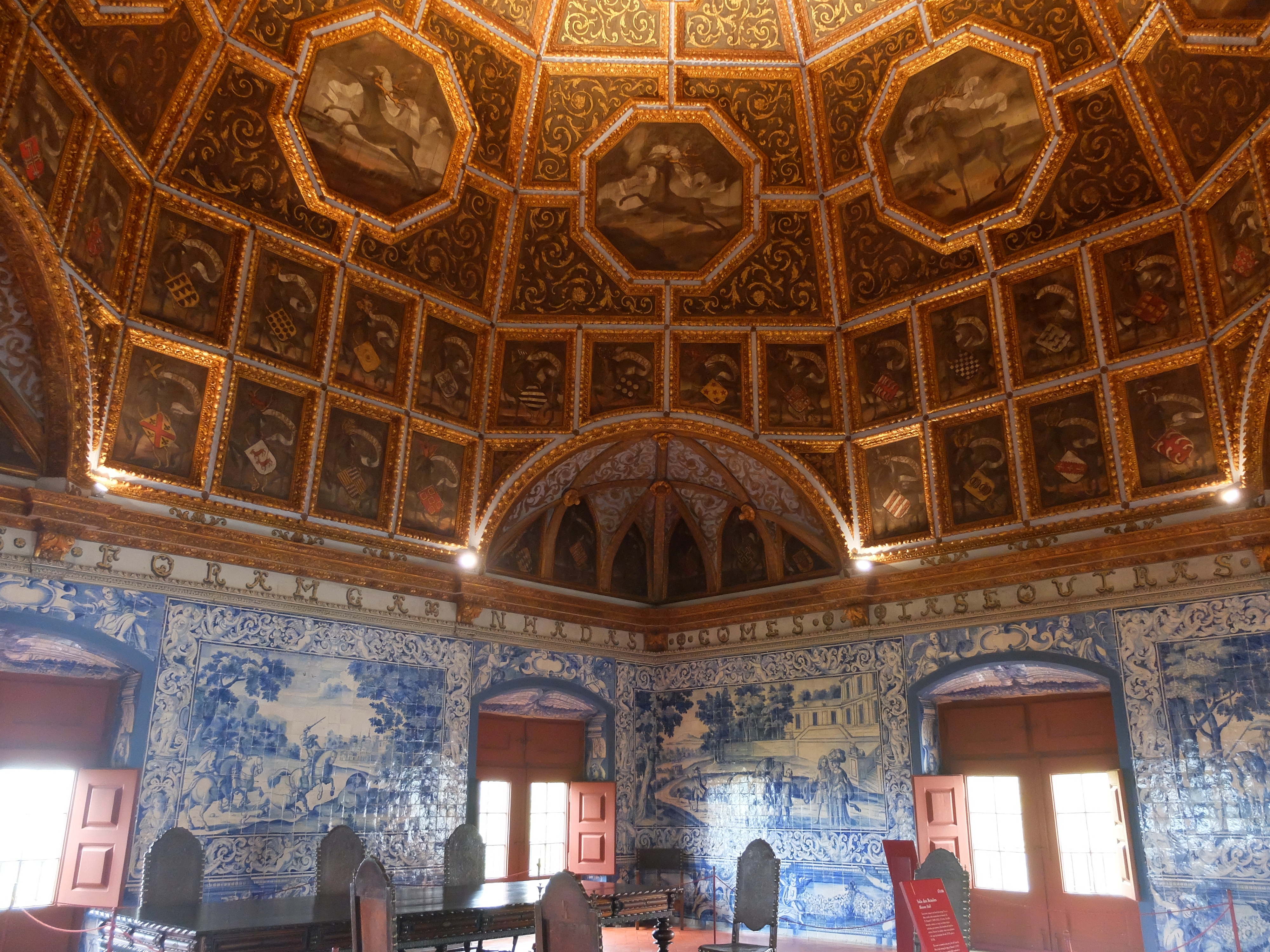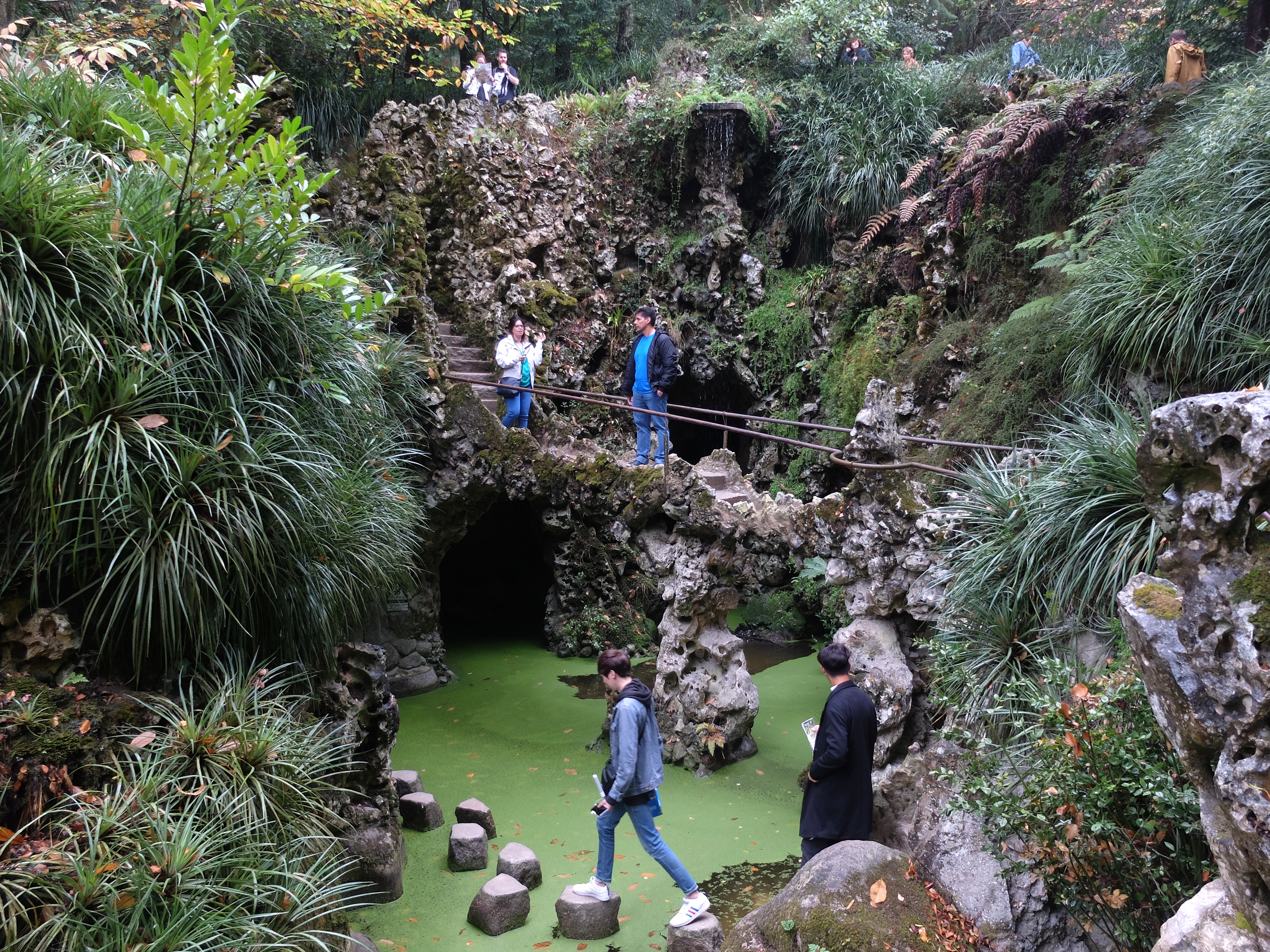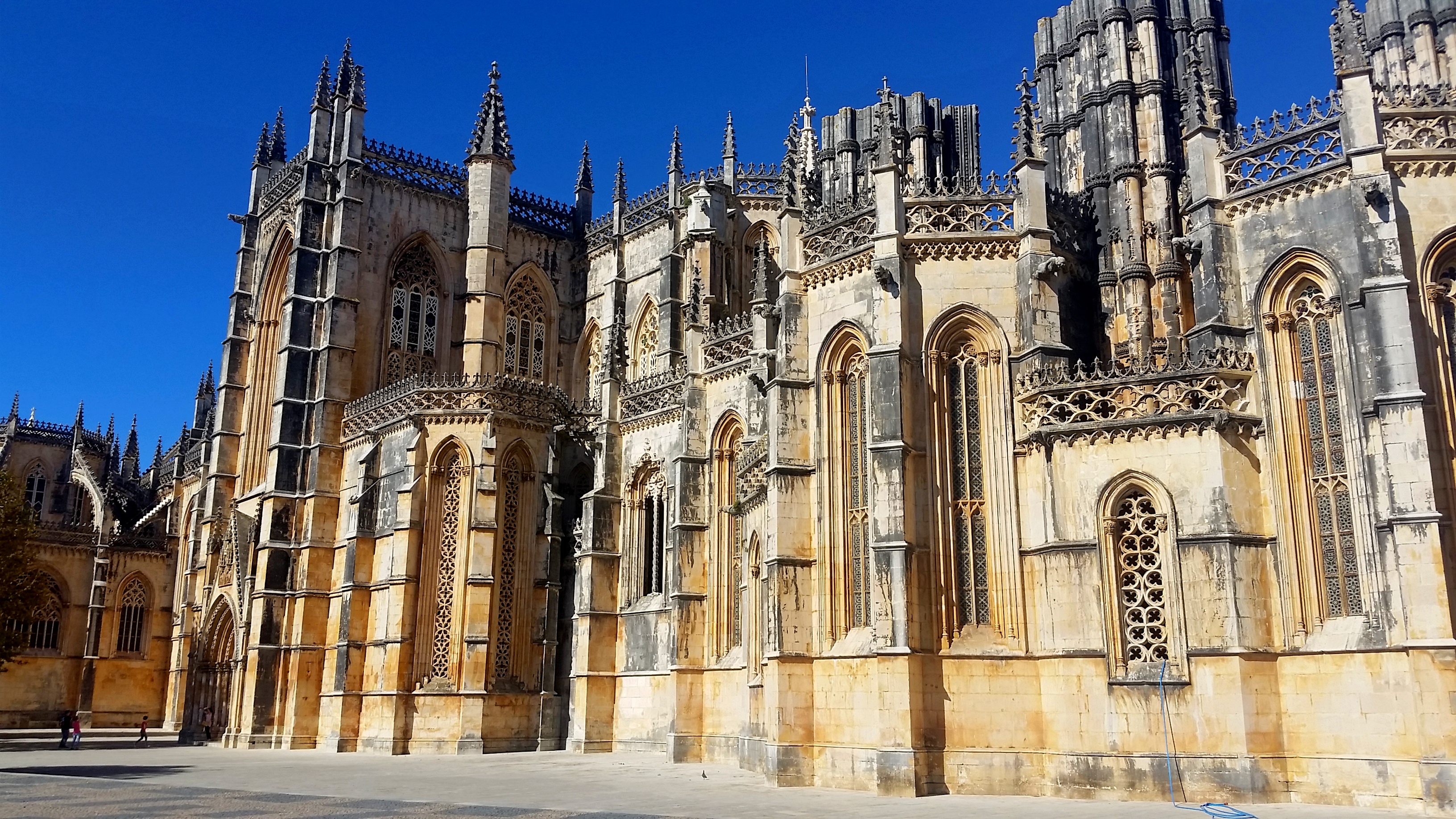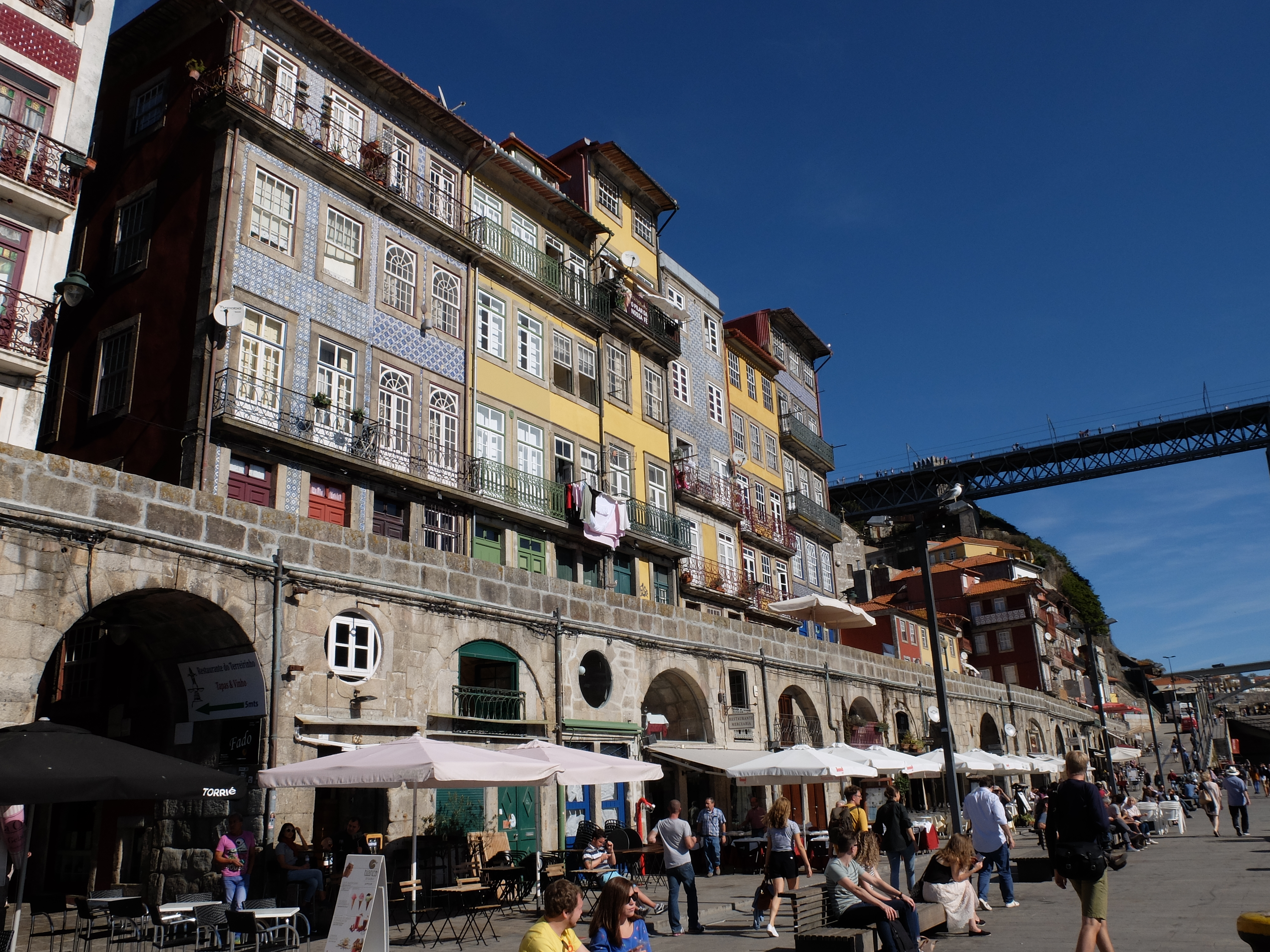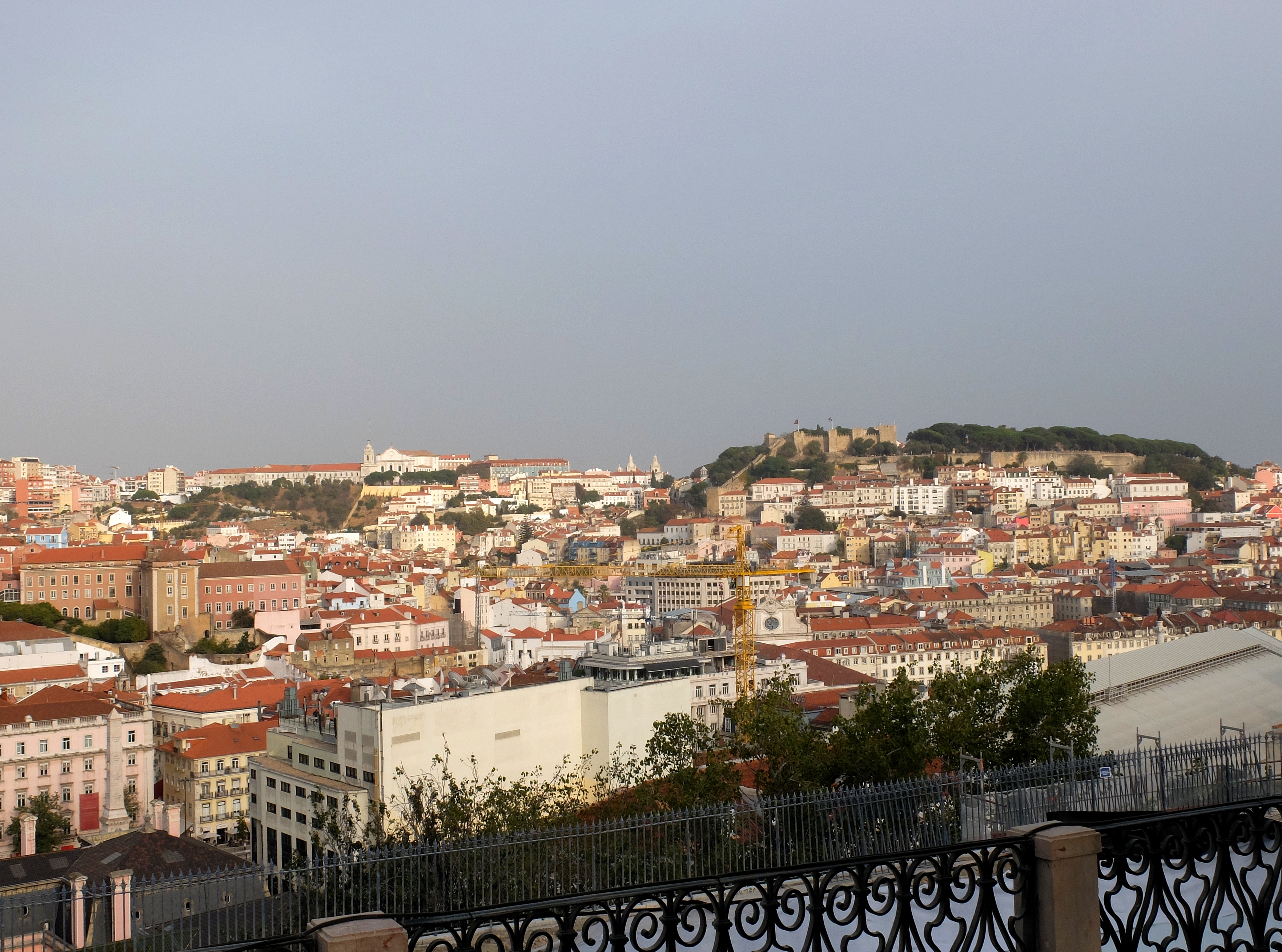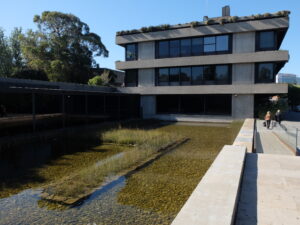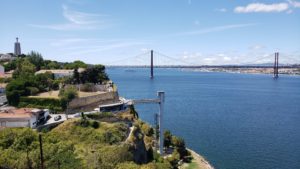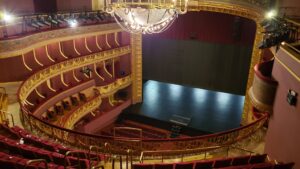In brief: We were thoroughly smitten with Portugal and its two major cities on our first visit ever. Here is what we saw and what we observed.
How could we have missed out on Portugal in our travels all these years, and especially Lisbon? We kept asking ourselves this question during our unplanned, but leisurely stay in the capital of Lisbon, plus a week up north in Porto, with a few stops in between.
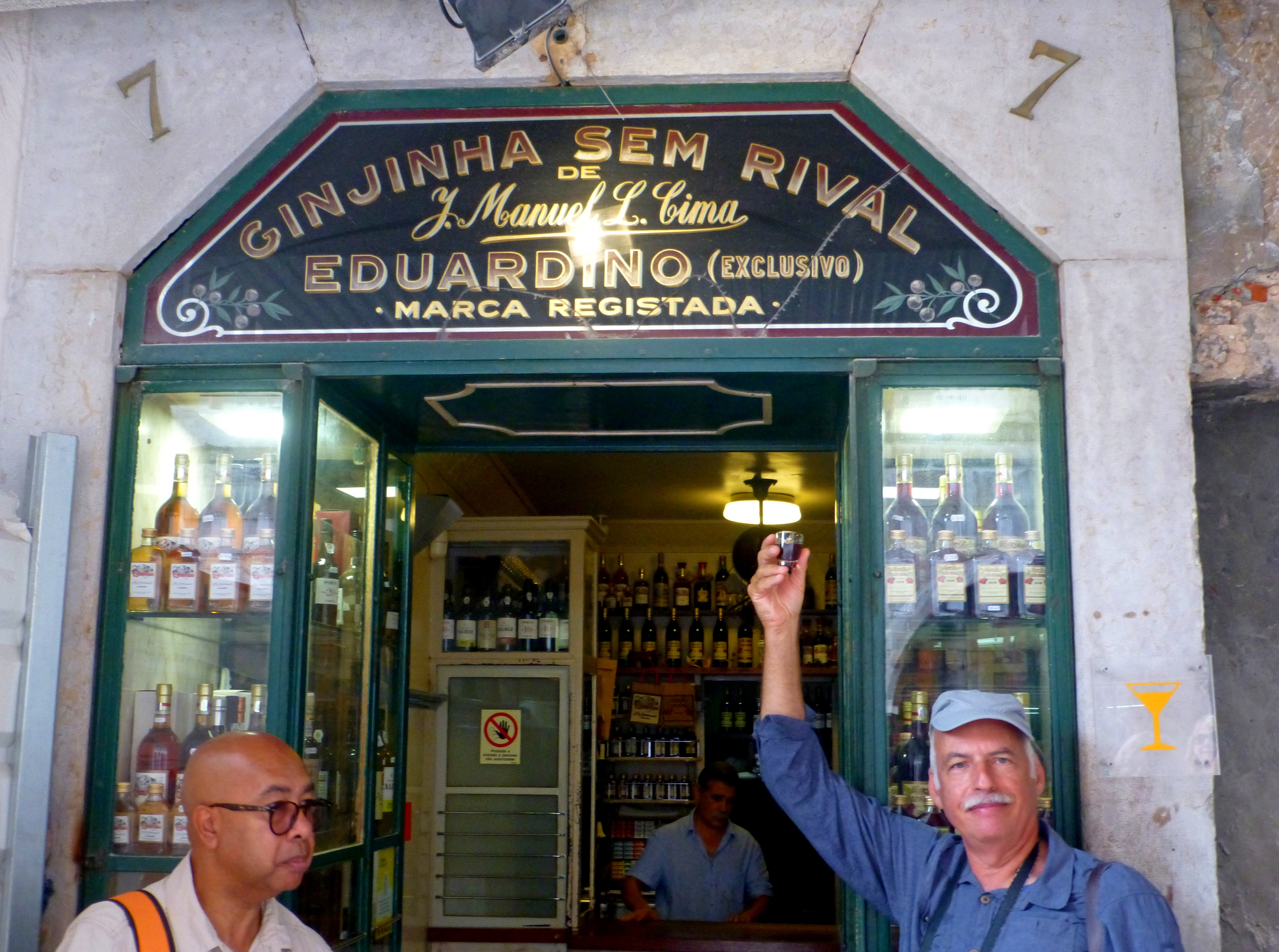
Lisbon
Lisbon is beautiful, its hills draped by elegant 18th and 19th century buildings – many of which are decorated or even completely covered with ceramic tiles in patterns or historical imagery.
Its history goes back centuries before that, eras you can trace through the monuments, statues, celebratory arches and columns on its streets – as well as in its many museums.
Considered one of the earliest countries of Europe, Portugal – along with its principal city – largely took current form by the 12th century, after the Visigoths and Moors left their marks. By the 16th century, explorers like Vasco da Gama were sailing to Africa, South America and India, opening up new trade routes and imposing royal colonial power on the native tribes.
As in the rest of Europe, monarchs rose and fell over the centuries. Yet they gathered enough wealth to build castles, palaces and stunning monastic churches honoring their military victories and conquests.
The most notable of so many notable churches in Lisbon is a brief tram ride from the central city, in the riverfront district of Belem.
There global trade funded the 16th century Hieronymite Monastery, a striking Manueline structure of impressive size and elegant design.
Manueline was a unique Portuguese adaptation of Gothic architecture. Within the monastery church, Da Gama himself is buried under a life-like supine statue. His neighbor in death is the poet Camoes, the Portuguese Shakespeare.
From this port, a short walk away from the monastery, Renaissance explorers shipped out and returned with valued goods. Today, you find a sleekly renovated riverside boulevard where only yachts and cruisers moor. It’s marked by a two towers.
The old one is a petite Manueline building that once guarded the port, but now offers a maze-like interior for tourists to explore. The contemporary tower displays a multi-story, arc-like frieze celebrating the old explorers.
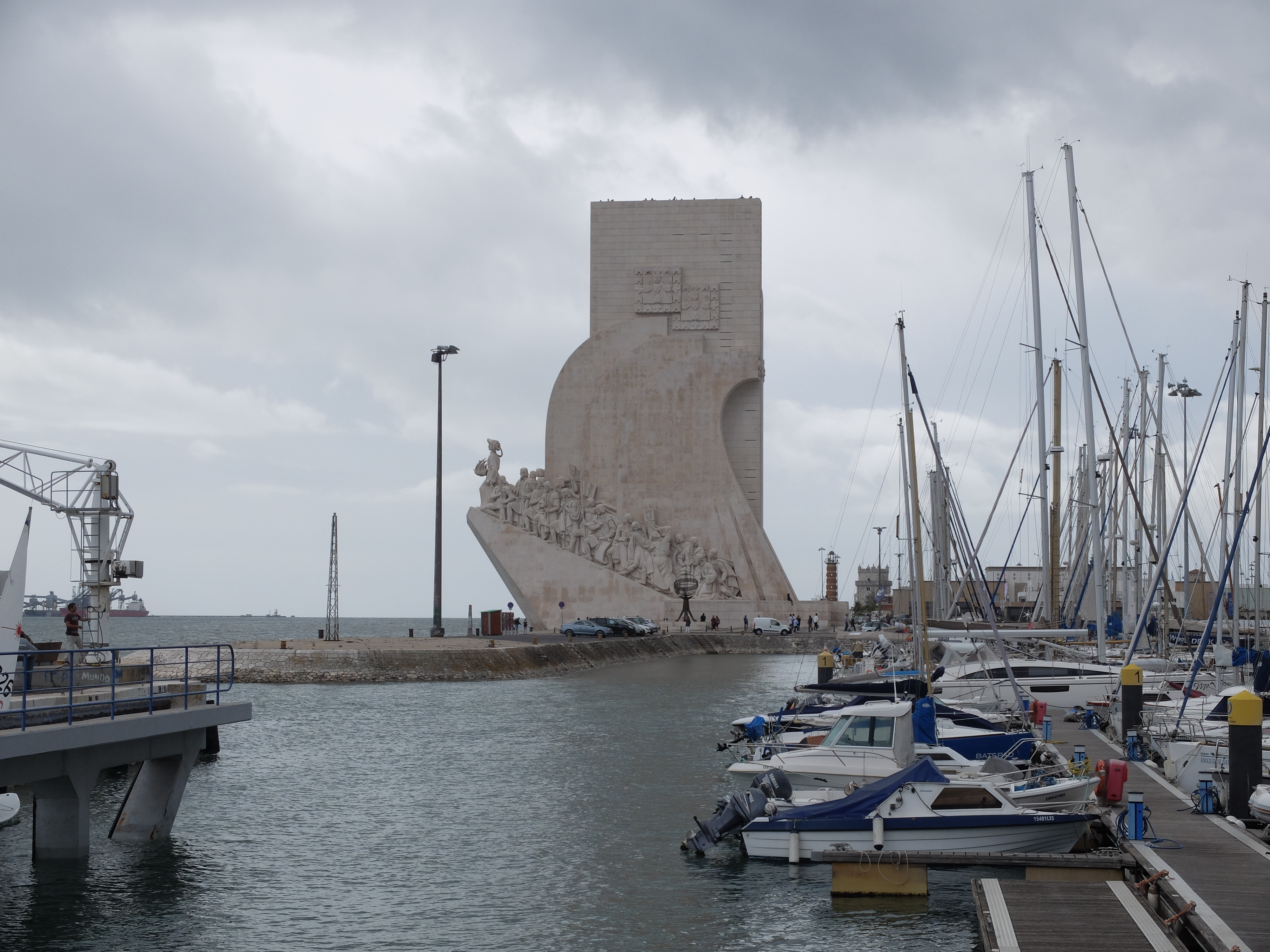
And at least one Lisbon neighborhood still feels medieval. Alfama is just a short uphill jaunt from the port that welcomes modern explorers in cruise boats. Its intertwined, narrow medieval streets and stairs meander the hillside just as they did when the Moors lived here. “Just wander the streets and get lost,” a friend, said.
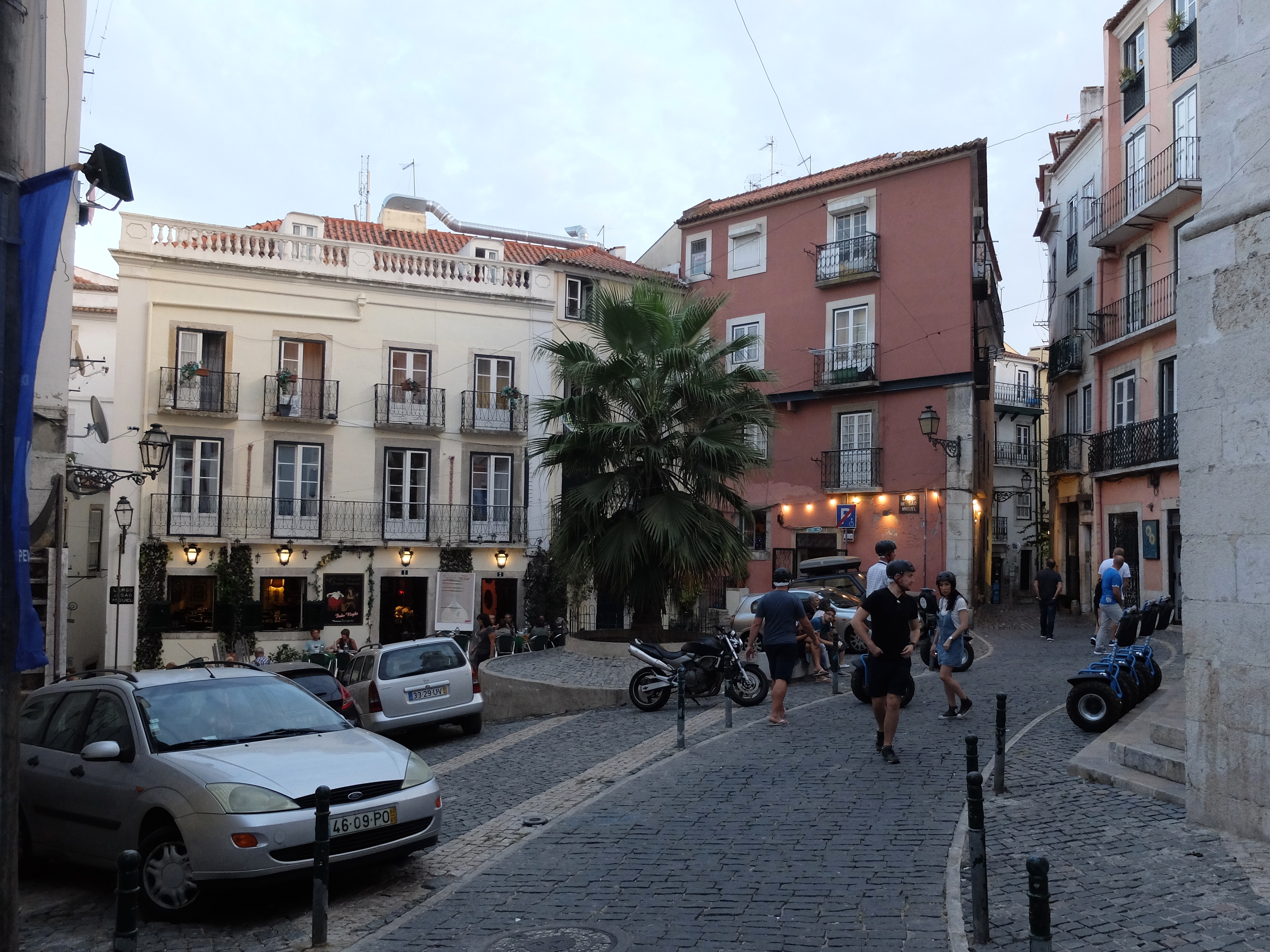
We did, enjoyably – angling right over here, and left over there, up stone stairways and down, discovering plazas hemmed in by buildings that strained toward the light above. We found countless little cafes and bars in the ground floor spaces that served passing business for more than a thousand years.
Otherwise the old Lisbon is the city rebuilt in the 18th and 19th centuries after the devastating 1755 earthquake, tsunami and fire. Even the old churches, with the exception of somewhat dowdy São Domingos church, had to be modernized after the quake.
The hero of that restoration was the prime minister Marquis de Pombal, a man often celebrated in monuments around town, including the huge arch that caps one of the highlights of the rebuilding, the enormous Comercio Plaza.
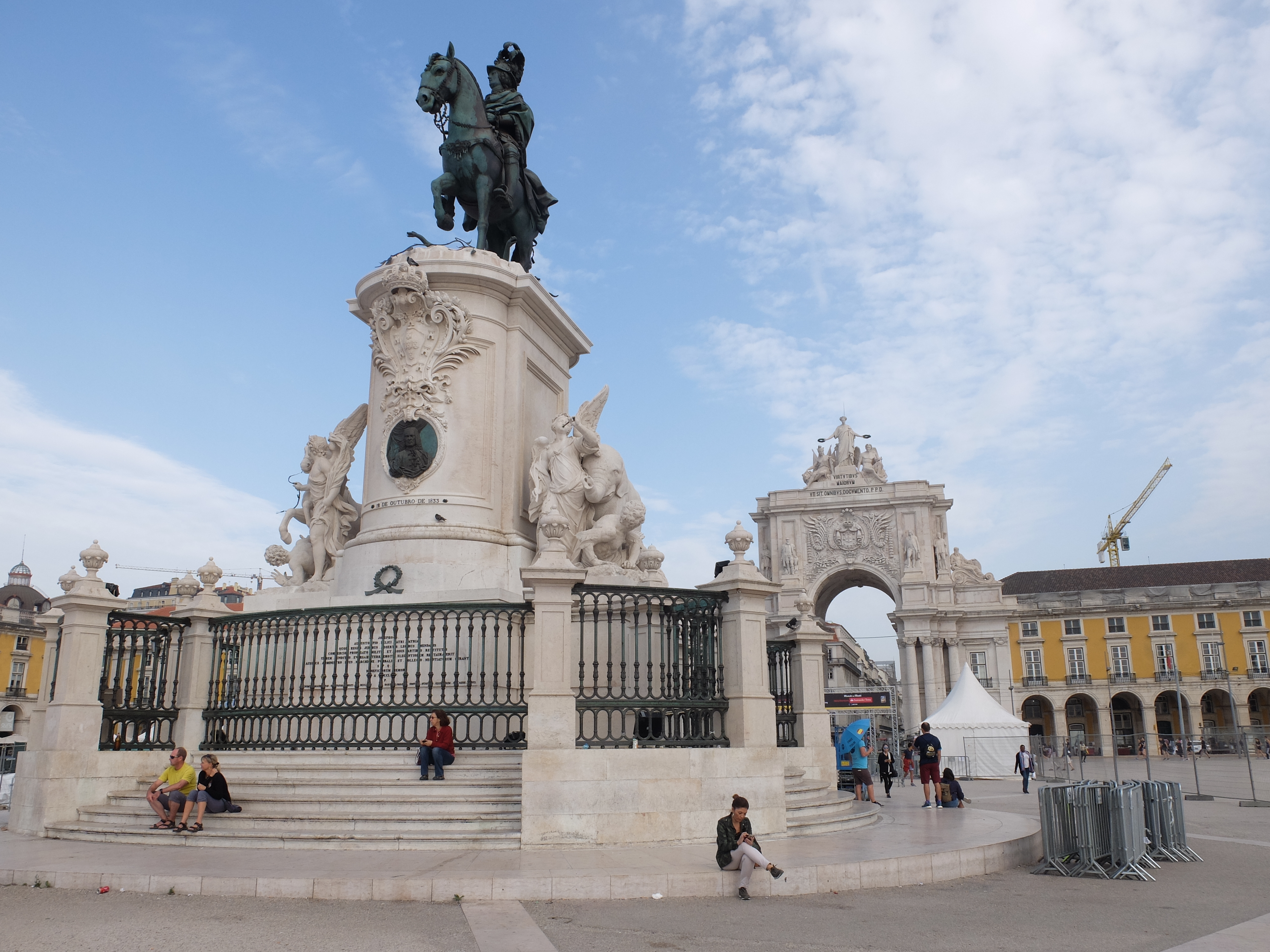
Comercio is elegantly enclosed on three sides by golden 18th century governmental buildings, out of whose arcades fancy restaurants and bars spill onto the plaza.
The fourth side opens theatrically onto the Tagus River, and the opposing hills.
The popular Masonic movement of that time left its traces in the streets leading away from the river along the flat bowl of the central city: paralleling the central street reached through Comercio’s arch are avenues named for the moon and the sun, emblems of enlightened progress.
All this vintage cityscape is a backdrop for a Lisbon that, today, is easygoing and sociable. People seem to cherish a Mediterranean attitude of relaxing and enjoying life. We frequently discovered groups gathered for coffee at the pastelarias or for games and conversation at the many small parks. Apartment windows on the lower floors are not barred or shuttered. They’re frequently wide open so that the residents can lean out to observe what is happening on the street, or to strike up conversations with passing neighbors.
Like most European cities, the city is also lively, with festivals, cafes and restaurants all over its streets. Even the tiny unassuming café we chose for a drink one night, had good food to offer, a convivial owner who cooked sausages over a makeshift coal grill, and tables arranged so tightly that we couldn’t help but start conversing with some Parisians next to us. And there is plenty to enjoy for entertainment, with world-class museums, rich theatre and endless concerts.
Lisbon even boasts its own musical accompaniment, in the form of Fado. Fado is a kind of mariner’s working-class cabaret singing, known for its sad tales of hard life and lost loves, more recently seasoned with more upbeat and social messages.
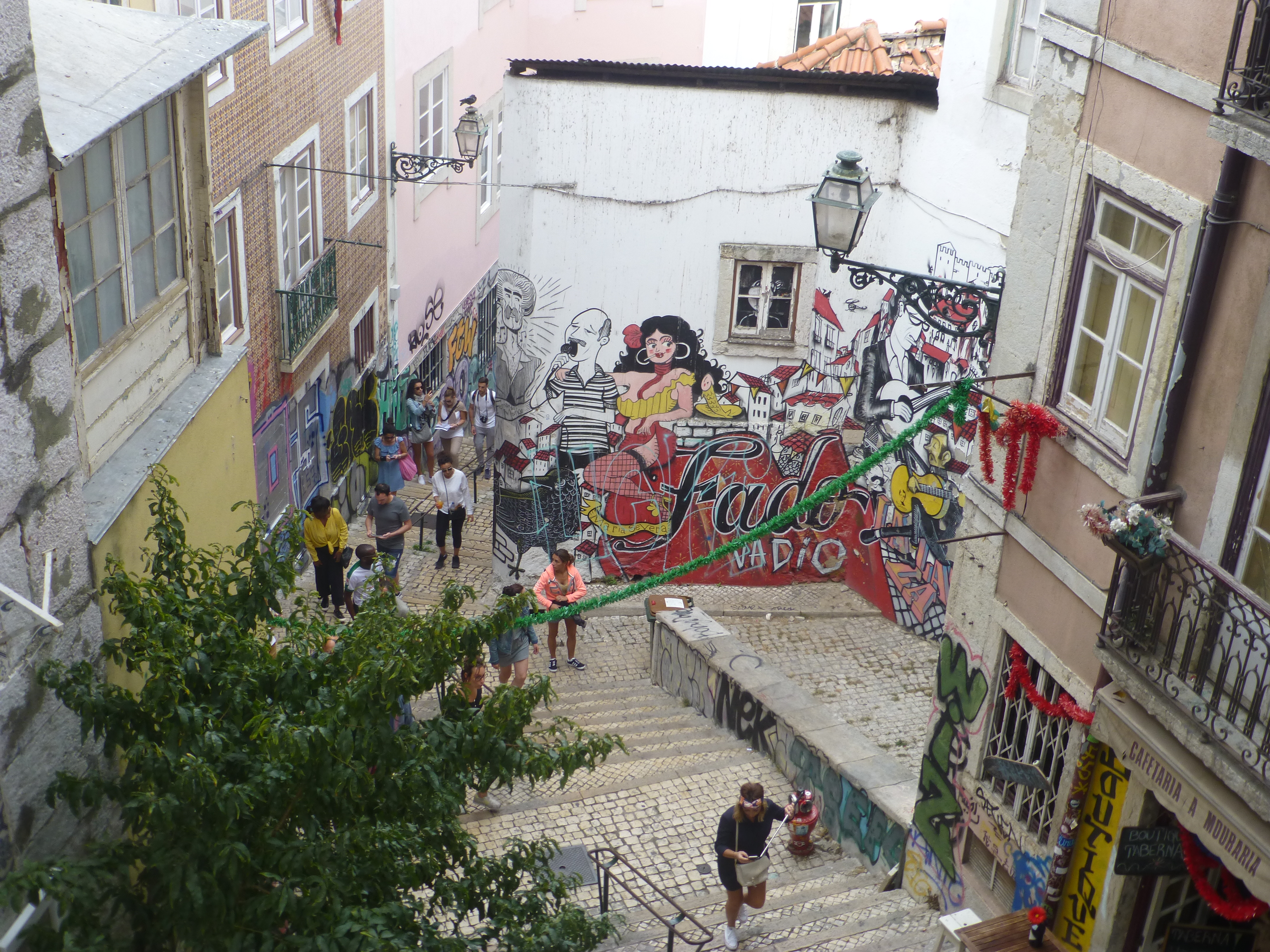
You can find Fado music all over town, in large restaurants and small bars, particularly in Alfama where it first arose. Many cater to tourists alerted by endless travel publicity to Fado’s cultural significance. We tried to avoid the worst and most expensive of these tourist draws by following a local recommendation of a tiny Alfama bar called Tasca do Chico. A narrow aisle split about a dozen large wooden tables and benches, which tightly accommodated around 50 people. That night, several singers including a 90 year old woman in surprisingly fine voice, all backed by a deft 12-string guitar player, delivered hours of appealing Fado.
For the passionate, there’s even a Fado museum in town. We chose some quieter contemplation from the many other Lisbon museums, including the spacious Ancient Art museum and some precious private museum collections: the Gulbenkian (see the article), in a complex partly museum and partly public garden, and the Medeiros e Almeida, in an opulently decorated family mansion off Liberdade Avenue.
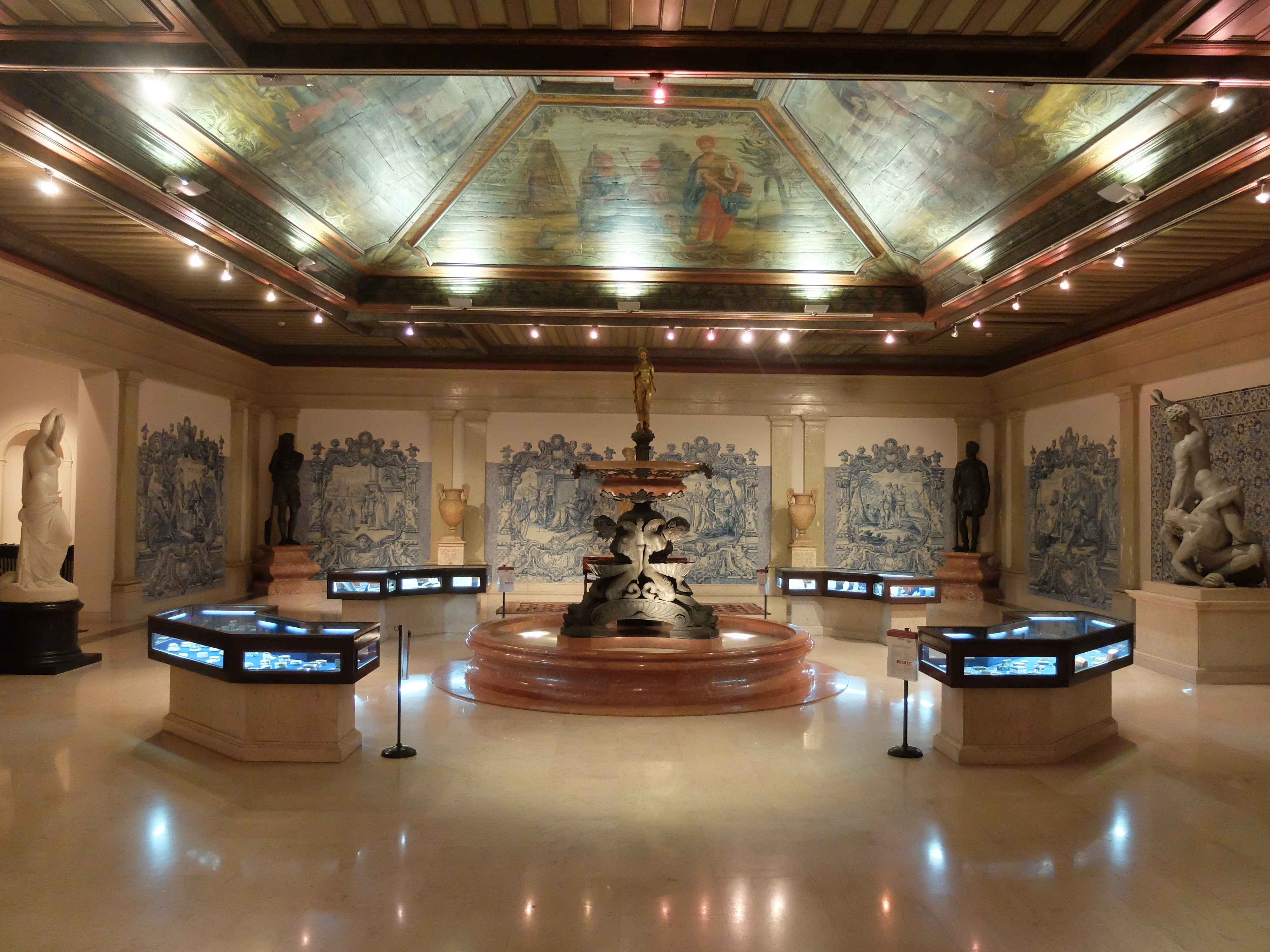
We were not surprised that Lisbon residents we met spoke proudly of their city. You could tell, though, that they felt the city had been slighted till recently by tourists favoring other grand cities of Europe – despite all its charms. They demonstrated a second city complex, often reminding us that Lisbon offered the best of other cities in microcosm.
The Champs-Elysees – we have that on the broad, leafy boulevard of Liberdade. Lisbon’s avenue starts from an ample plaza at the south end with grand buildings like the neo-Moorish train station Rossio and the neighboring neo-classical music auditorium. It mounts gradually to the northern end past high end shops, ritzy cafes and pleasant side streets. At the north, a circle celebrates not Triomphe, but the Marquis of Pombal again.
Trams like those in Zurich or Vienna – check. They clank along narrow streets, carrying local passengers when they can, though all too often filled by tourists because the tram routes trace surprisingly complete tours of the city highlights.
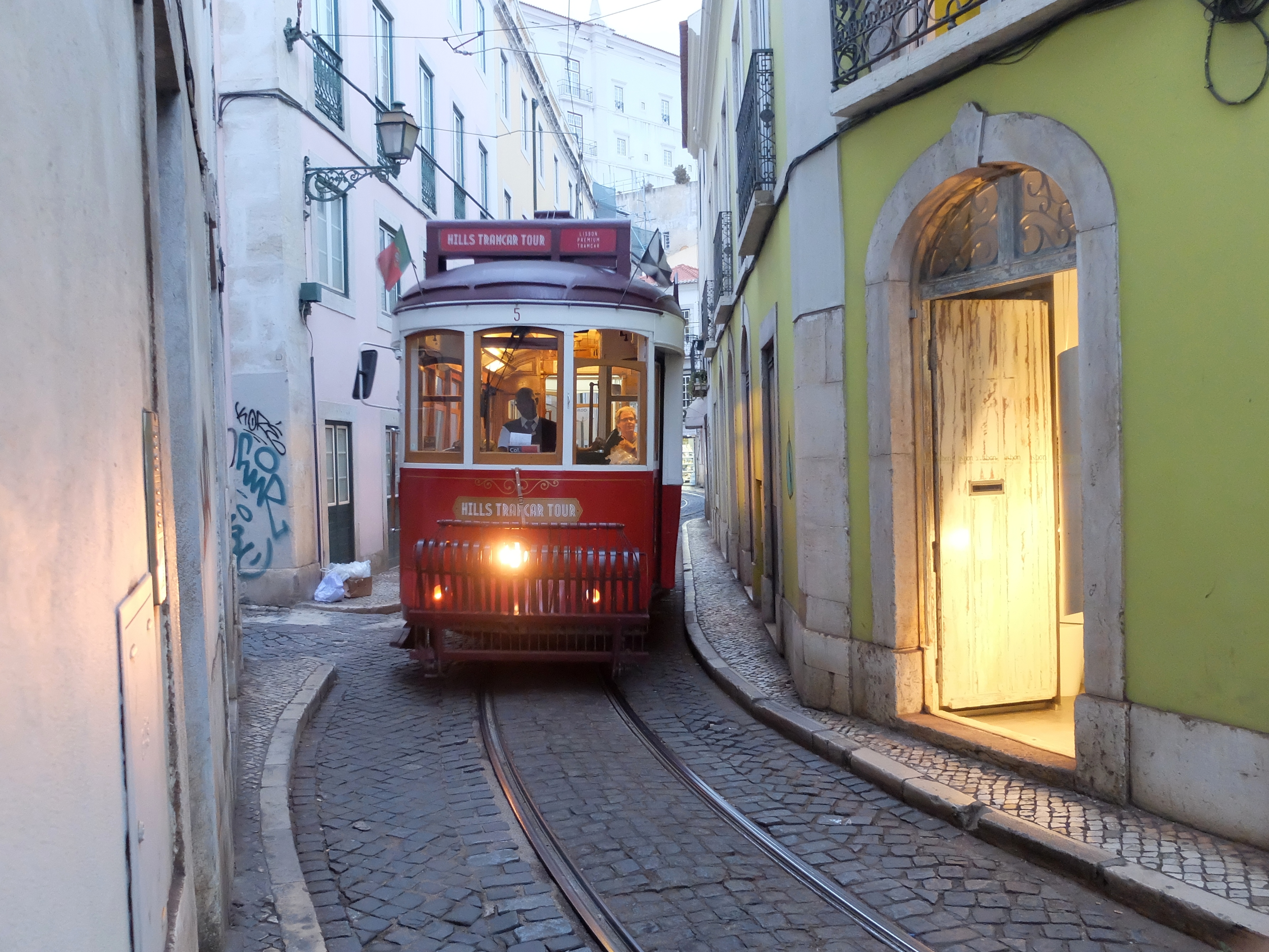
The seven hills of Rome – check. Other than the valley through which Sun, Moon and Liberdade avenues run, central Lisbon does occupy seven hills. As a touring walker, we often found ourselves taking the most arduous ascent up hillside streets or staircases; but the savvy traveler uncovers the hill’s hidden treasures, the various public elevators that do a lot of the work for you.
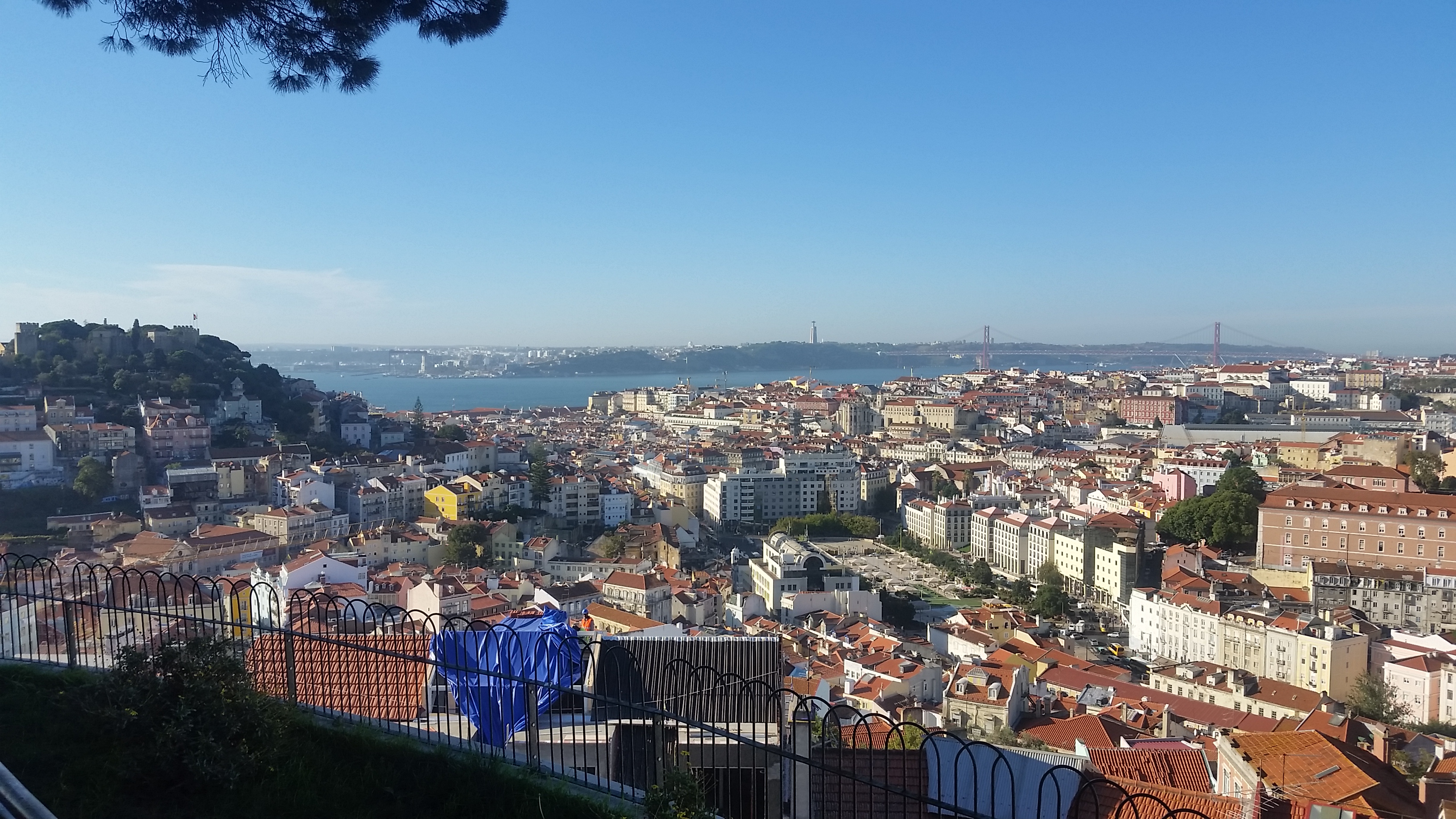
Atop these hills, from “viewpoints” at the edge of church plazas, we enjoyed many splendid views over the city. Or wondered at the flowery baroque altarpieces within the churches.
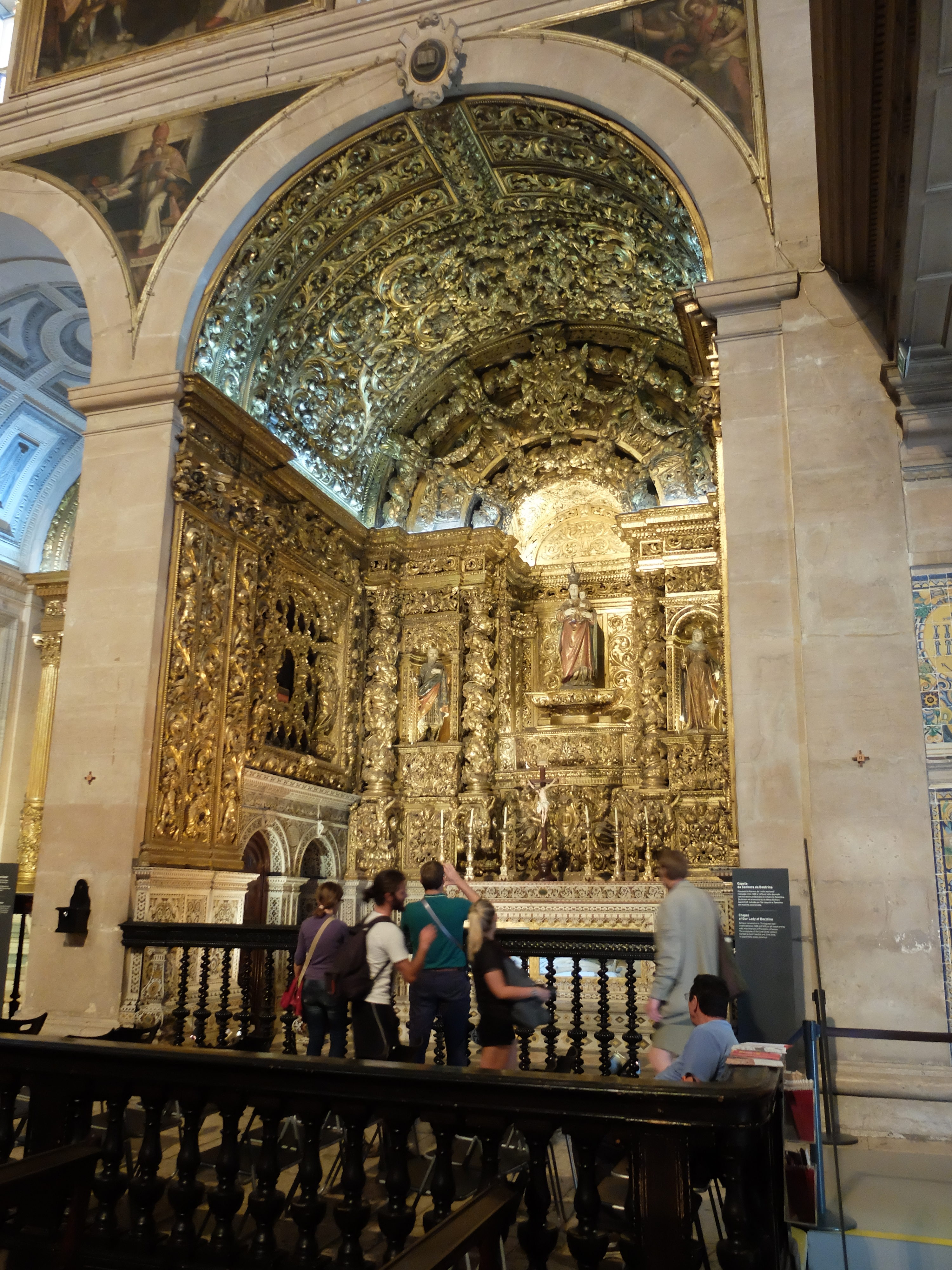
Sintra
Clearly the founders of Portuguese cities loved hilly terrain, whether for defense, for religious purpose, or for egotistical displays of wealth, as at Sintra near Lisbon. Historically, Sintra’s economic highs and lows mirrored its rolling landscape.
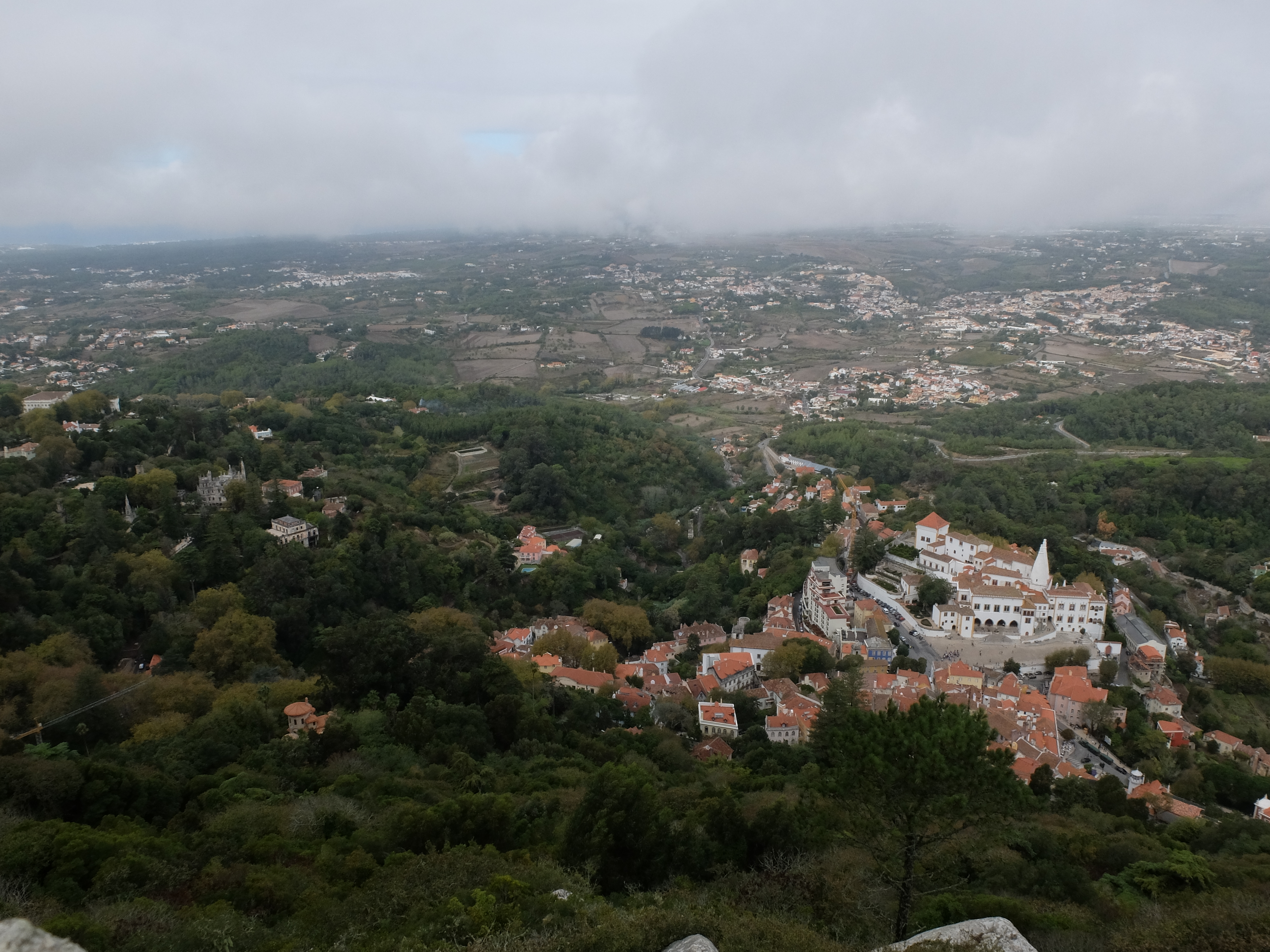
The Moors originally occupied the high ground until they were defeated. After their medieval hilltop fort crumbled for three hundred years, several kings built and occupied an opulent royal palace here (the National Palace); the town became a haven for the court and aristocracy.
The kings were content to have their palace in the valley merely surrounded by the thickly forested hills.
Then the town languished for another three hundred years until, in the 19th century, the wealthy and aristocratic, seduced by the “romantic” atmosphere, took over the high ground and competed with each other for the most ostentatious castle.
The wildest is the highly popular Pena Palace, a fantasy world of a palace in multiple styles and colors, with extensive grounds and diversions. To us, it was a showy hodge-podge of pseudo-antiquity. We much preferred Quinta da Regaleira.
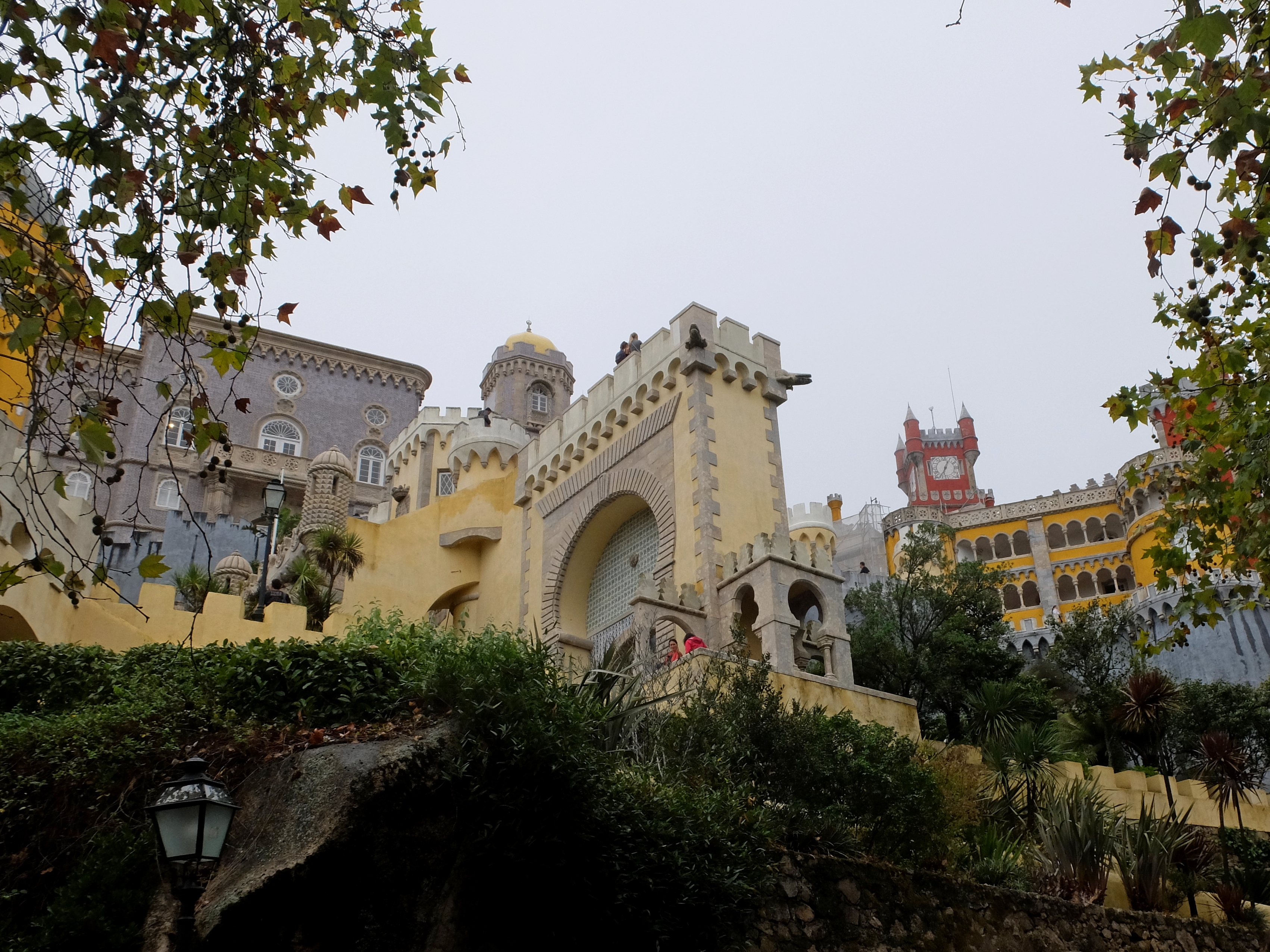
Though Regaleira’s neo-Gothic style is also invented, it is far less flashy, with charming rooms. Its fantasy area is the exuberant garden: there a maze of pathways link fanciful grottoes, miniature castles, subterranean passageways and water features. Without a map, you can be happily lost in the adventure and wonder of it all.
Today, most of the 19th palaces like these are open to the public. But the hilltop grab has continued with the building of newer mansions by the wealthy, who are trying to rival, in their own way, the old dukes and princes.
Braga
Sintra is odd in its mansion-craze; across Portugal, most hilltops are capped by churches and viewpoints, not private palaces. The most elaborate one we saw was near Porto, the Bom Jesus, a splendid baroque edifice set amid hectares of park land. Its distinction is the ascent to the church, one intended to represent a metaphysical journey, with more Masonic overtones, rising nearly 600 steps (and 120 meters) in tier after tier, symbolic image after image, toward the summit.
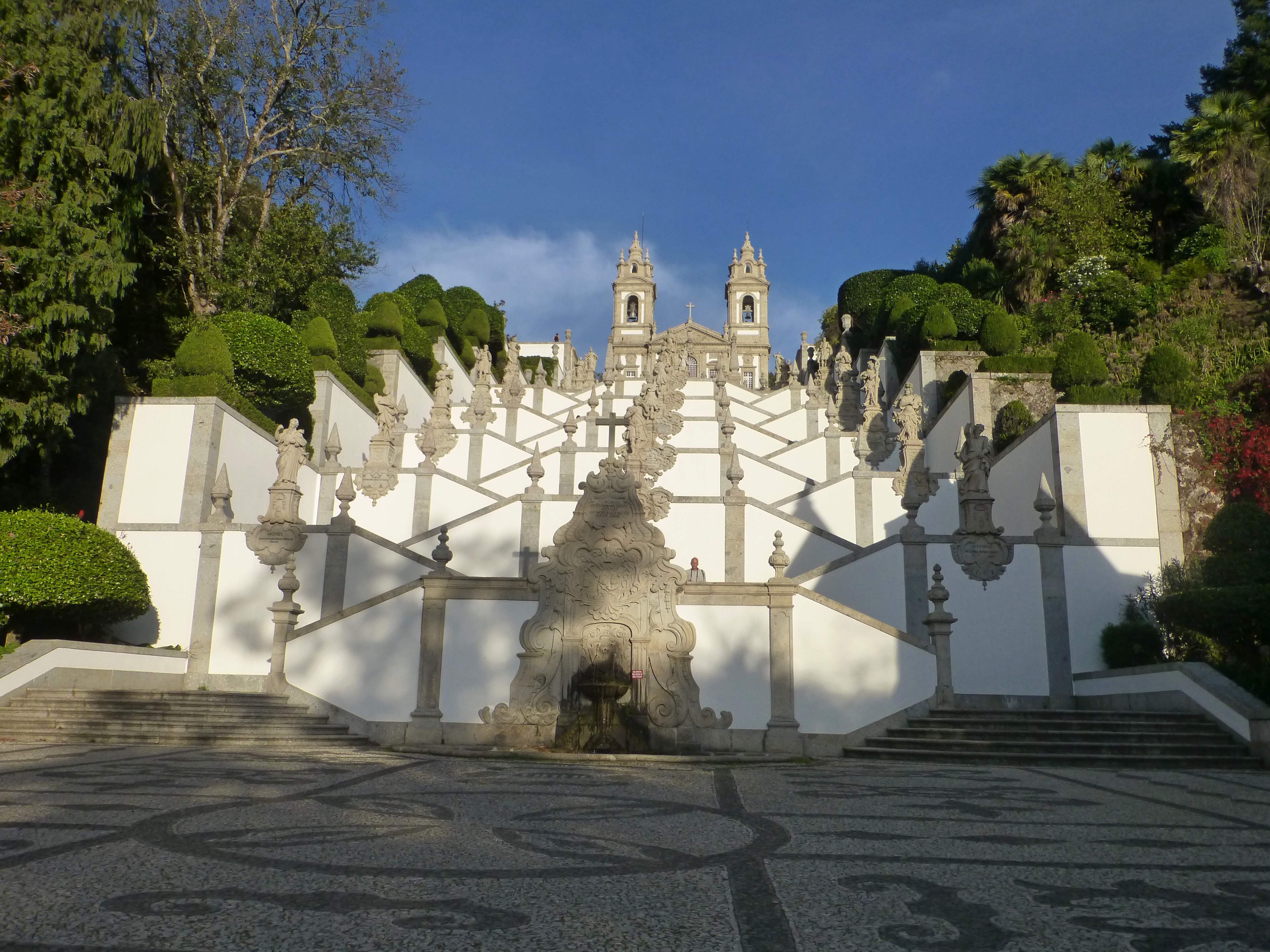
Monasteries at Alcobaca and Batalha
Other magnificent monasteries honoring military triumphs grace small towns north of Lisbon. Two of the finest dominate the centers of Alcobaca and Batalha. As at Belem, the past echoes within the grandeur of their churches and the quietude of their cloisters.
Alcobaca’s striking 18th façade illustrates how the massive earthquake of 1755 transformed Portuguese cities and towns – just as medieval Lisbon largely disappeared in the earthquake’s rubble.
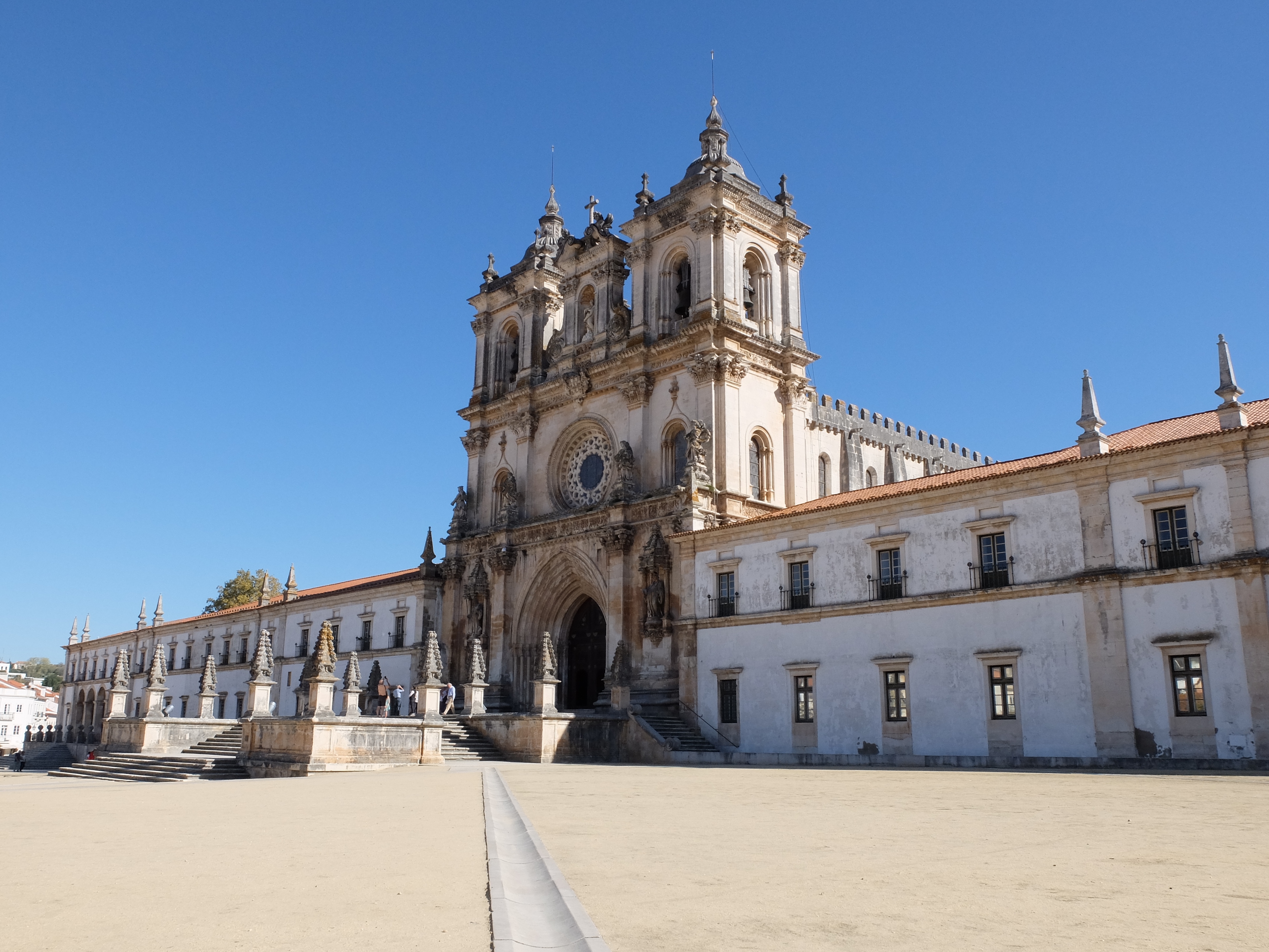
Batalha was mainly built during the 15th century after victory over the Spaniards. It glows in the sunlight like a fancy wedding cake, reflecting the highest achievement of that Manueline style. The older Alcobaca, built in more austere style during the 13th century, celebrated the defeat of the Moors.
But you can gain a sense of what was lost in the capital by visiting the well-preserved medieval town of Guimaraes in the north, with its narrow streets, angular plazas and ancient buildings. Guimaraes, whose founder and namesake Vimara Peres triumphed over the Moors, suffered little earthquake damage in 1755.
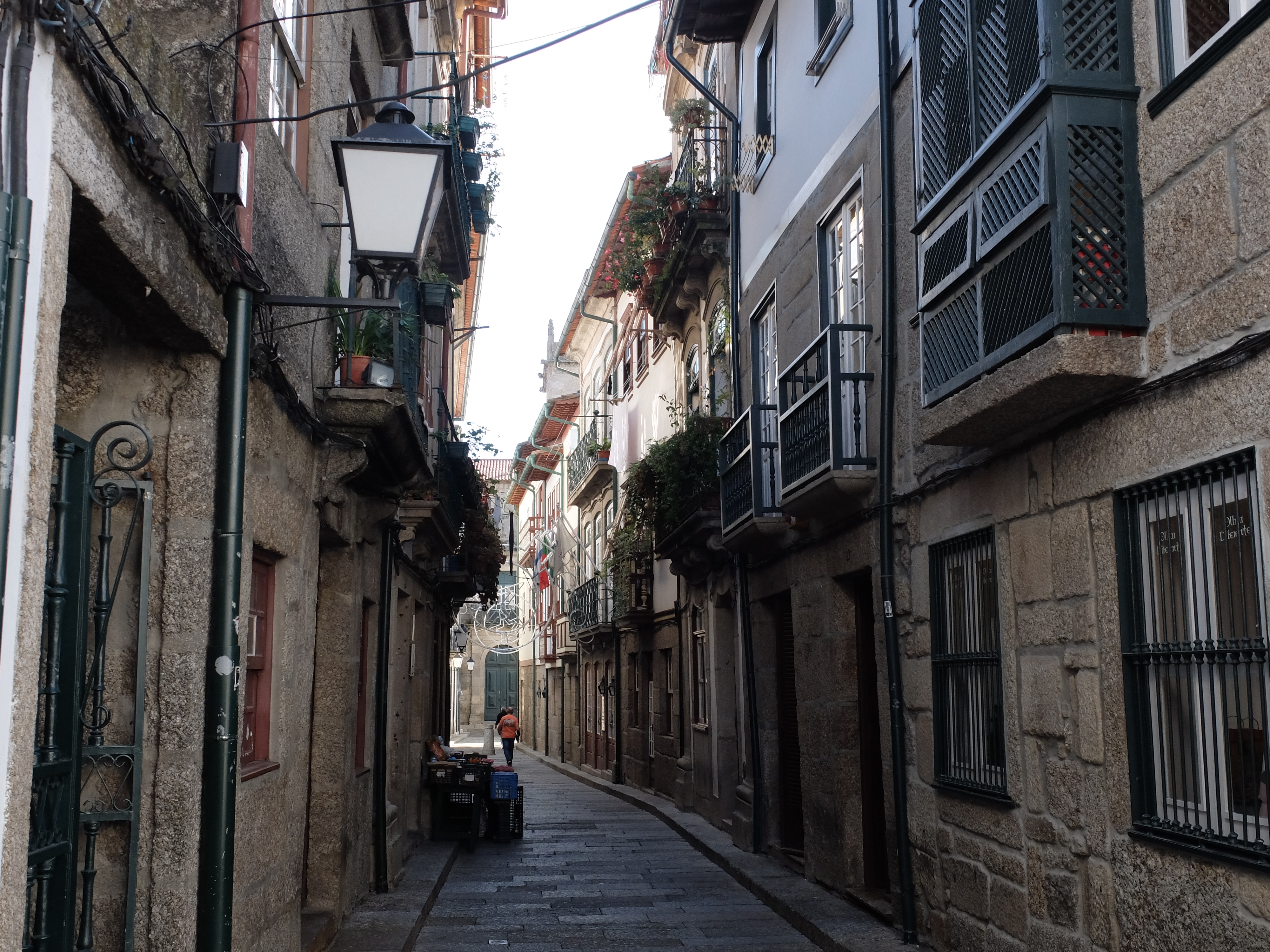
Porto
Porto, the actual second city of Portugal, also set churches on the peaks of its steep hills – and pretty much everywhere else too. Unlike Lisbon, however, it offers no trams or elevators to help get up and down.
Walking was a challenge even when we didn’t indulge in the famous port wine (19% alcohol) produced upstream on the Douro River.
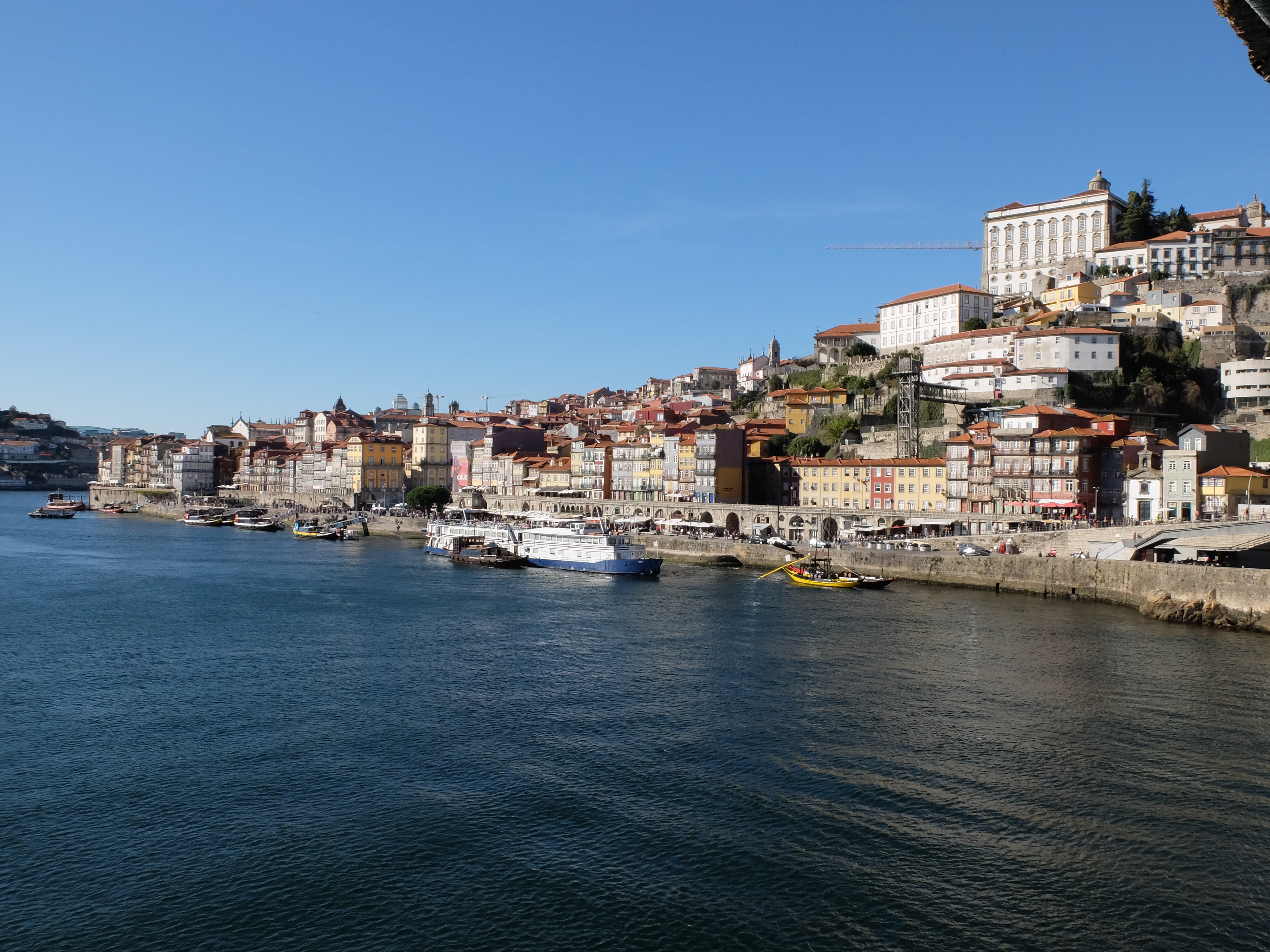
Across the river, on the left bank, you can still buy it from the mostly English shippers of the 18th century, like Sandeman, Taylor and Warre.
We thought Porto captured the most delightful virtues of Lisbon and other Portuguese towns in miniature.
We often felt it outshone the capital – with charming streets, buildings extensively tiled inside and out, those dazzling churches, extraordinary plazas and a winding riverfront along the Douro.
Plus, the large number of students at its university helps the city feel young and energetic. We happened to visit during various raucous rituals, parades, and swarms that celebrated the start of the school year.

For all we enjoyed in Lisbon and norther Portugal, we recognized – and were counseled by friends – how much more there was to return for.
We never made it, for example, to the many attractive beaches near Lisbon nor farther afield to the south to Portugal’s Riviera, the Algarve – or even up the Douro to its vine-laden hills.
So many delightful medieval and modern towns, so much hilly landscape, await us that we don’t plan to wait too long before we come back.
We don’t want to wonder again how we could have missed out on such pleasures!
(To enlarge any picture, just click on it. Also, for more pictures from Portugal, CLICK HERE to view the slideshow at the end of the itinerary page.)


